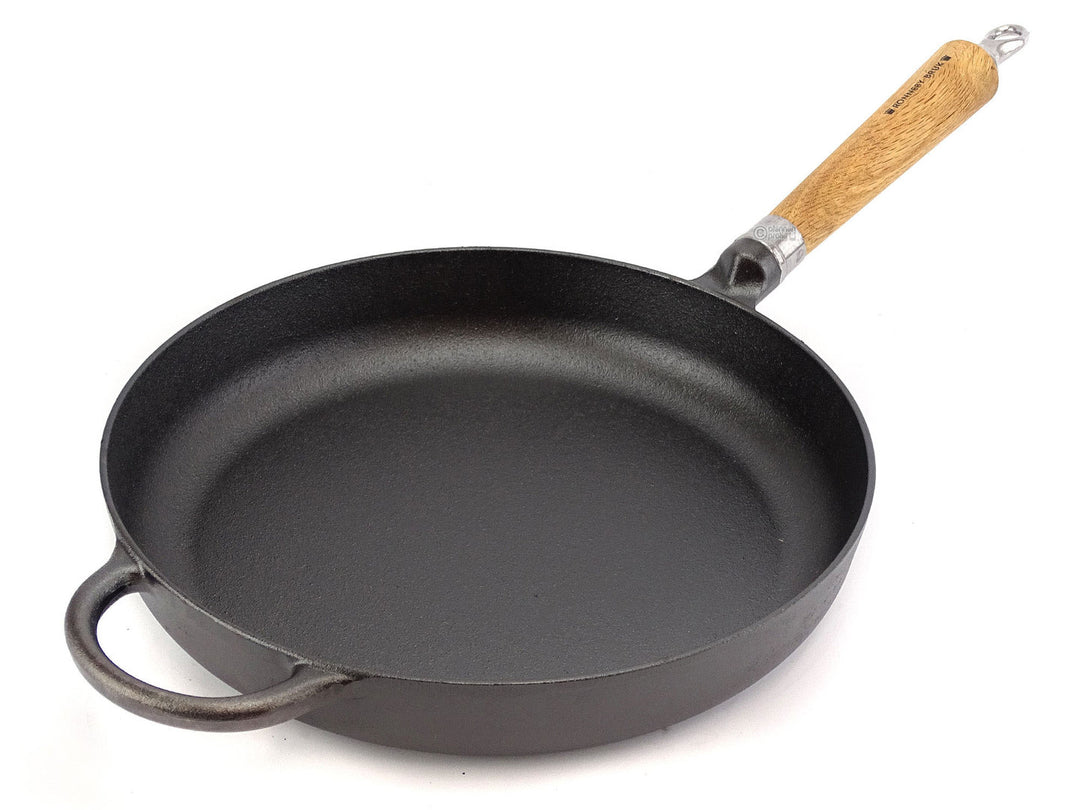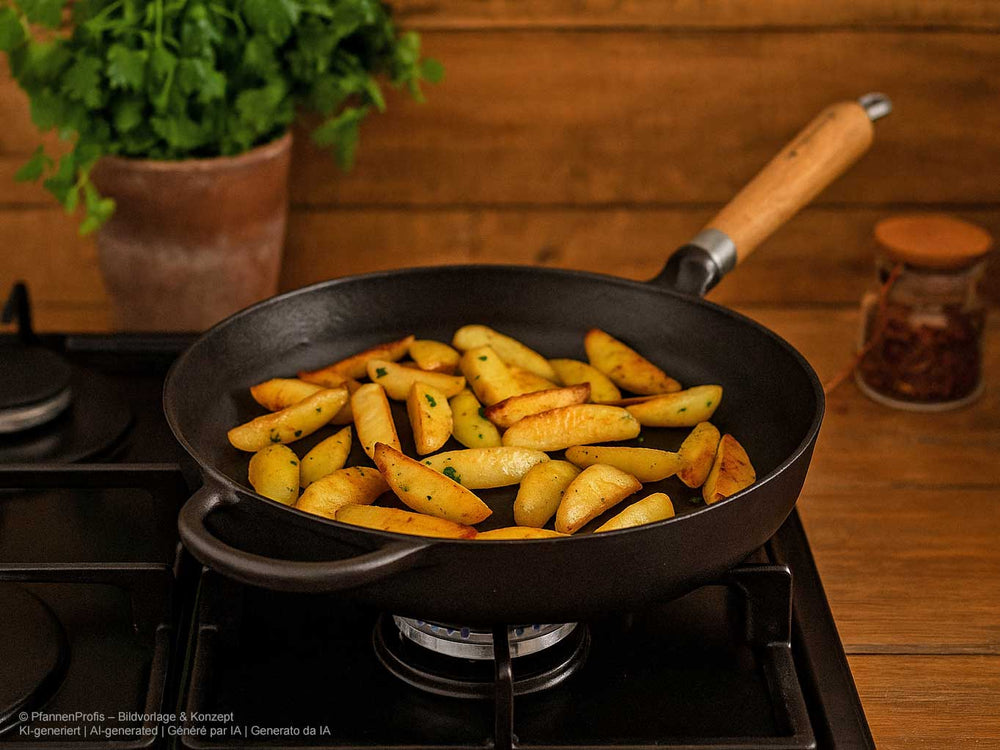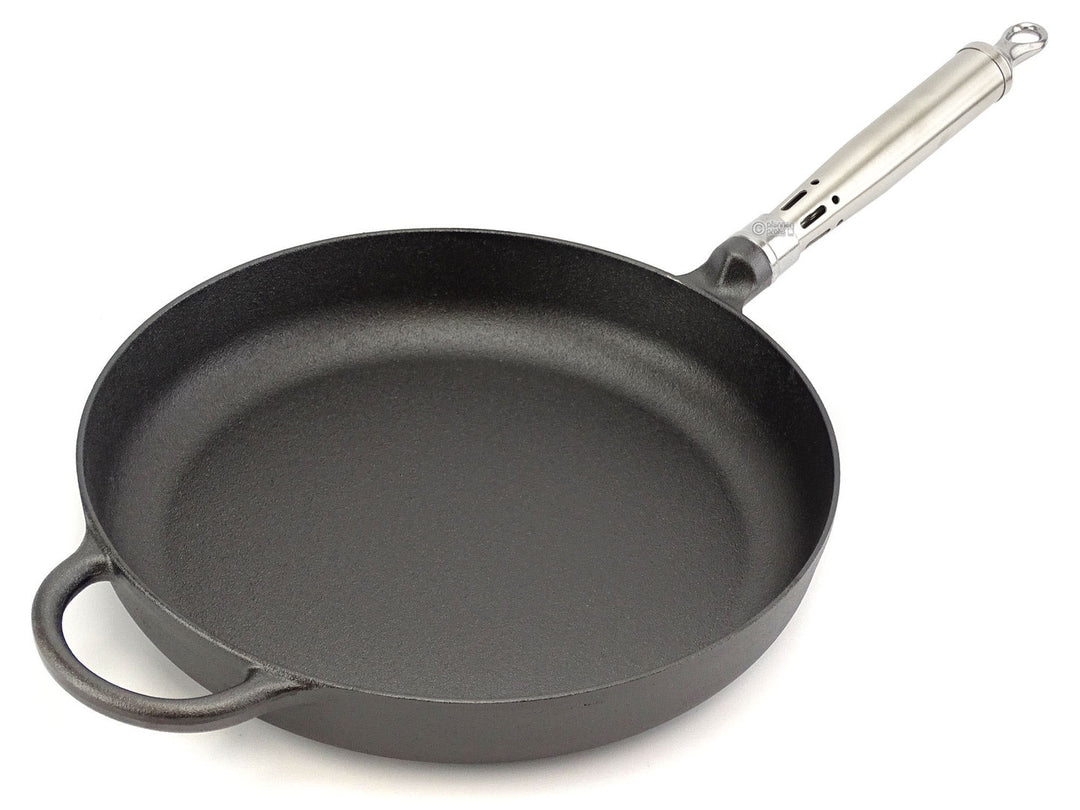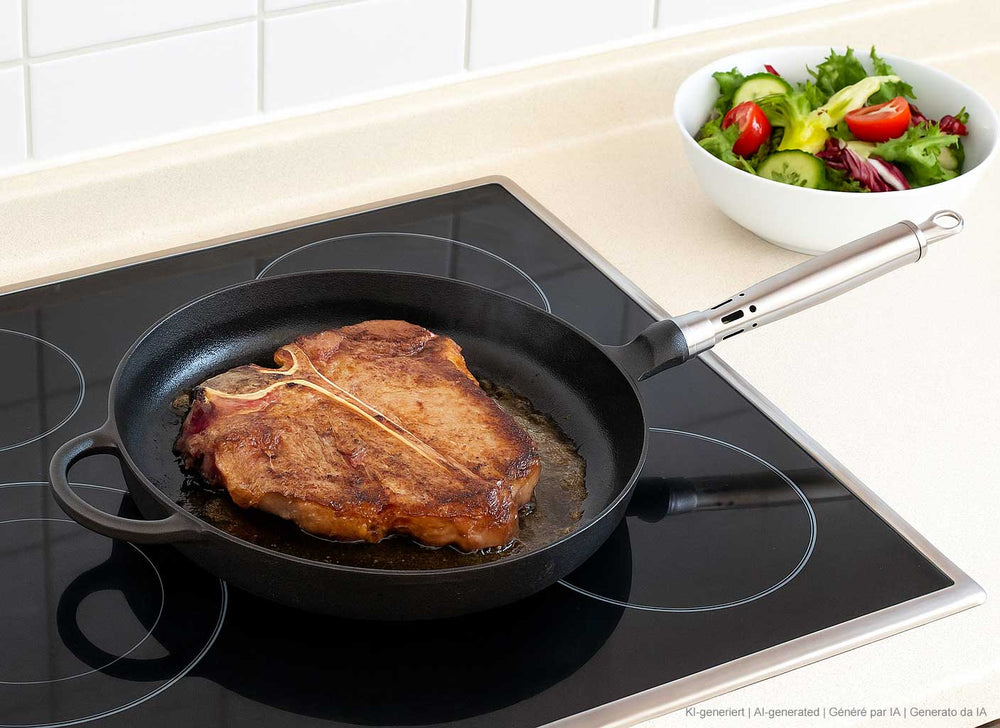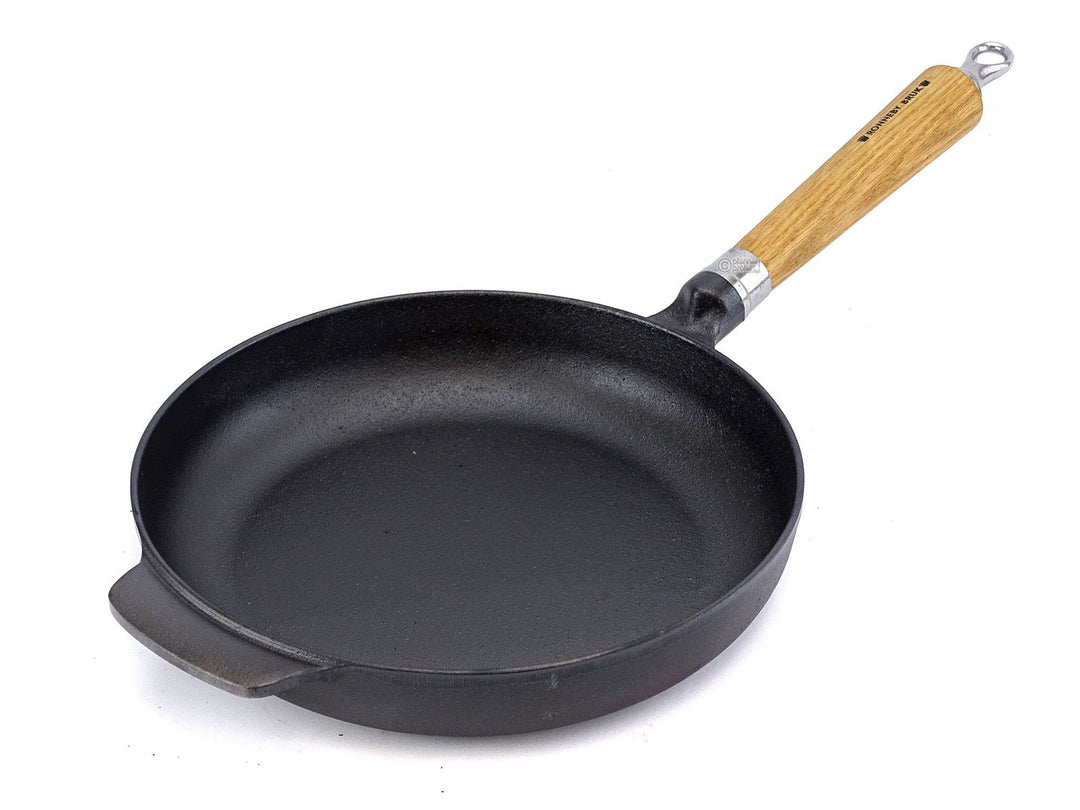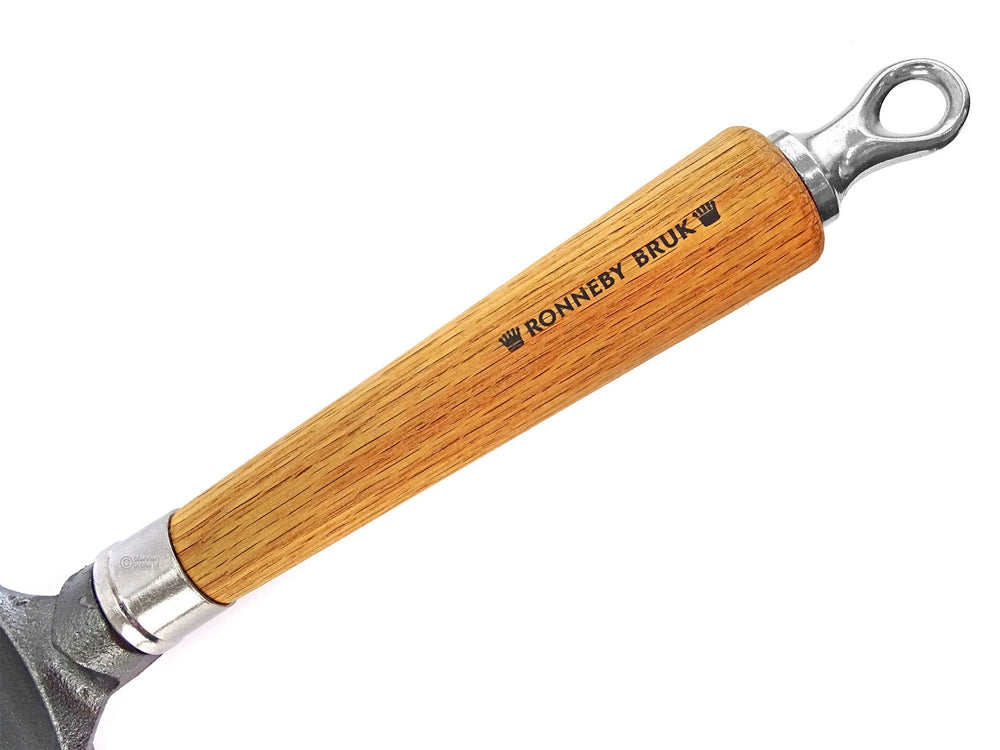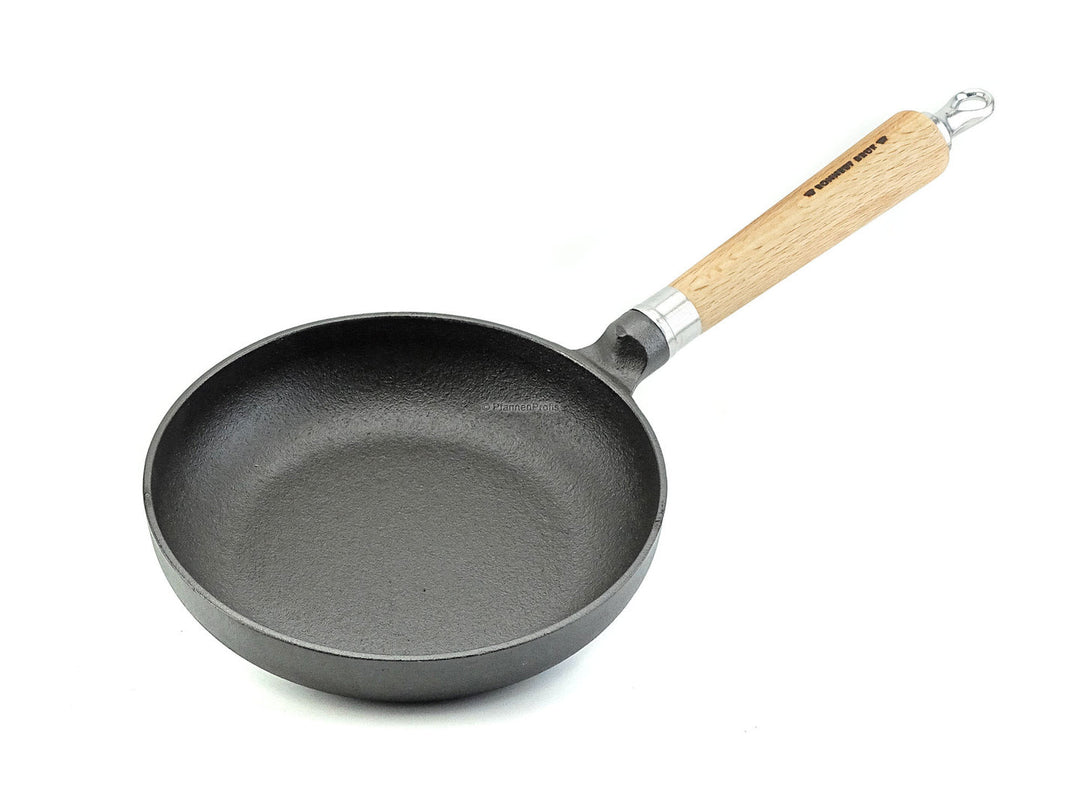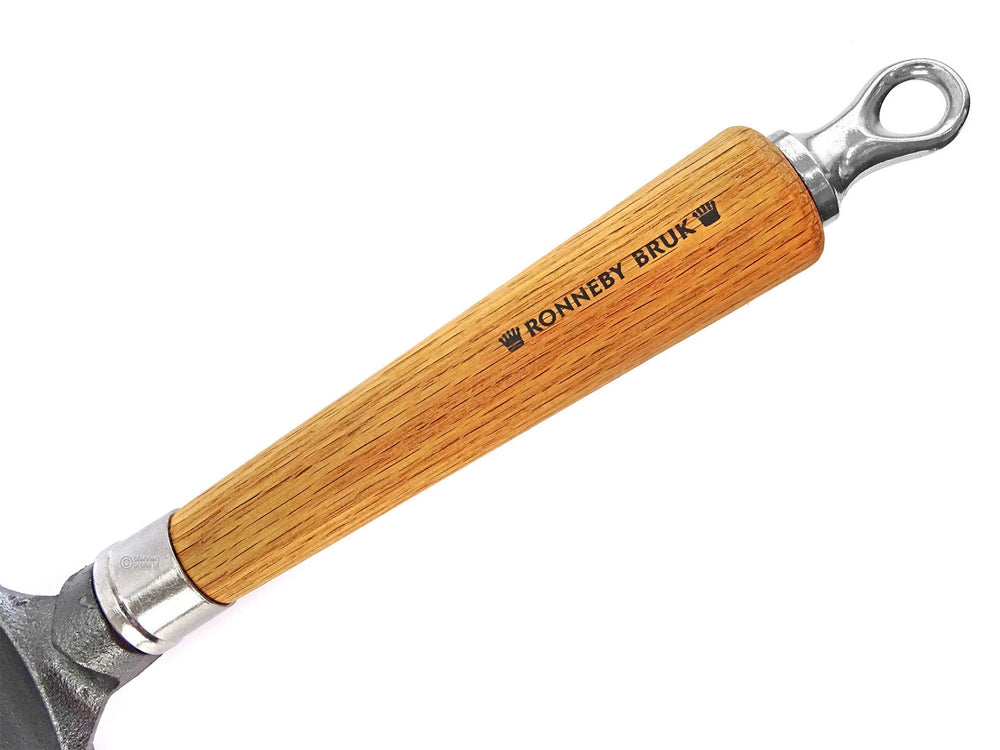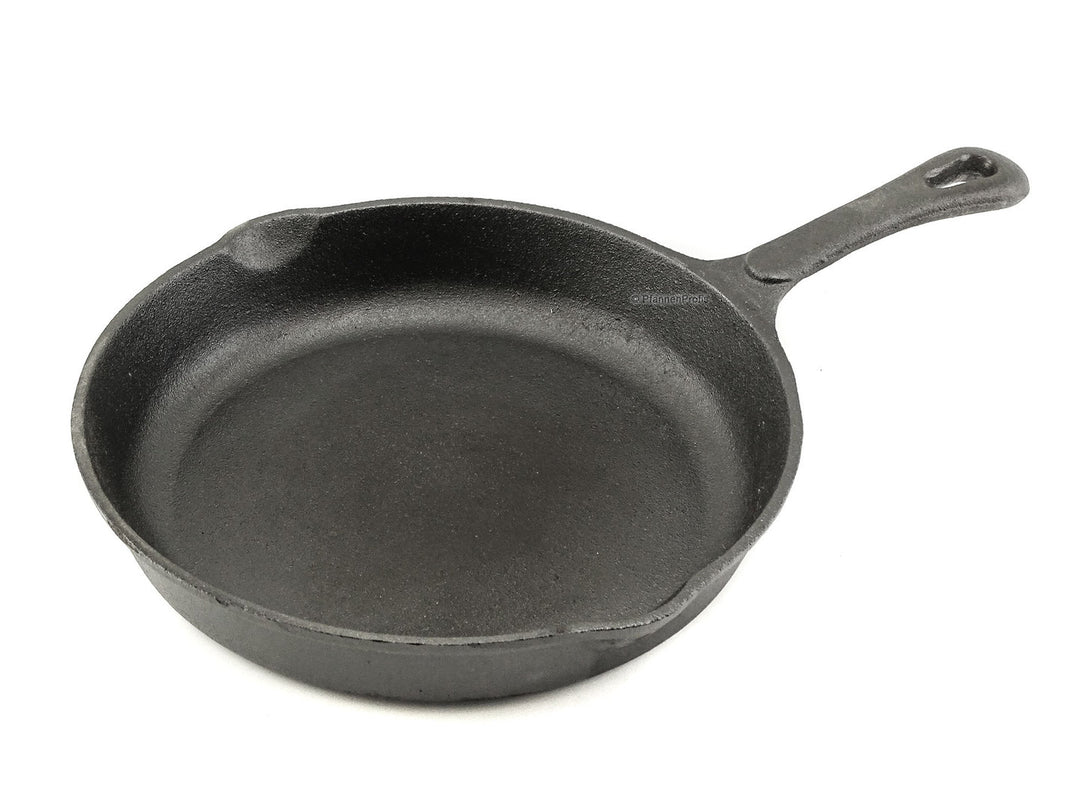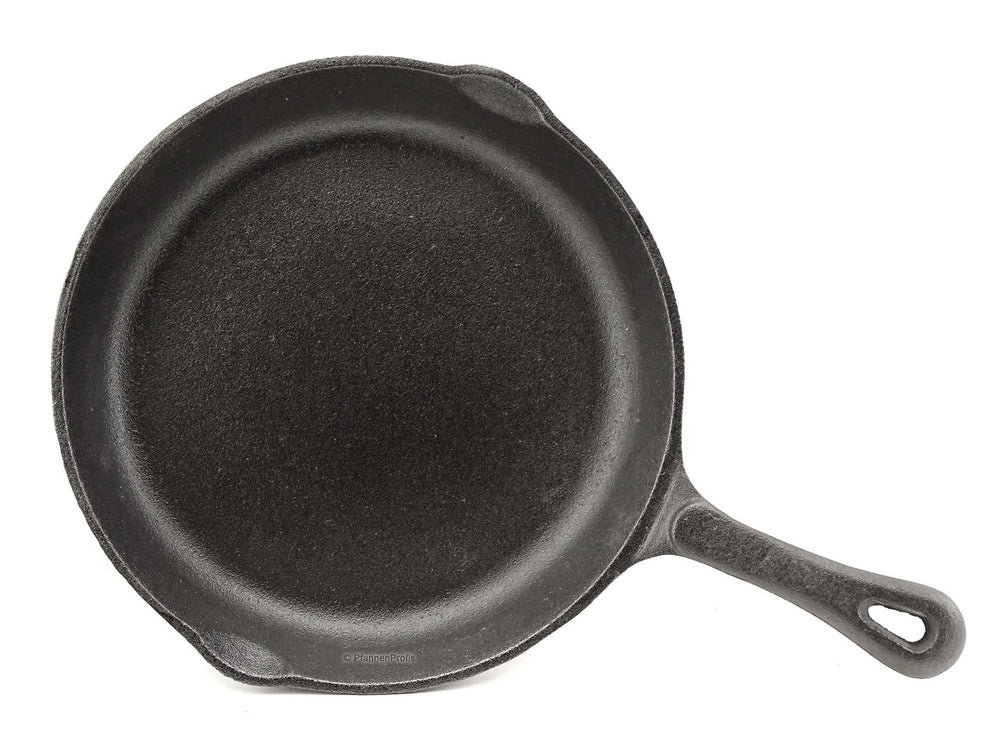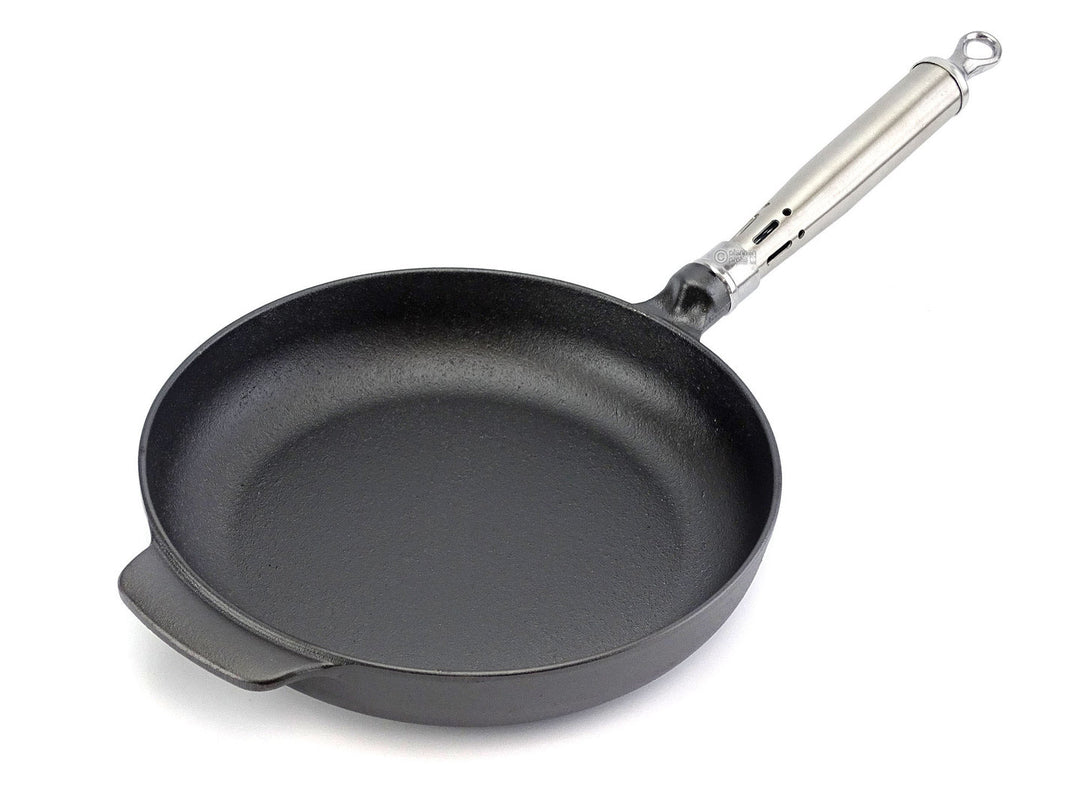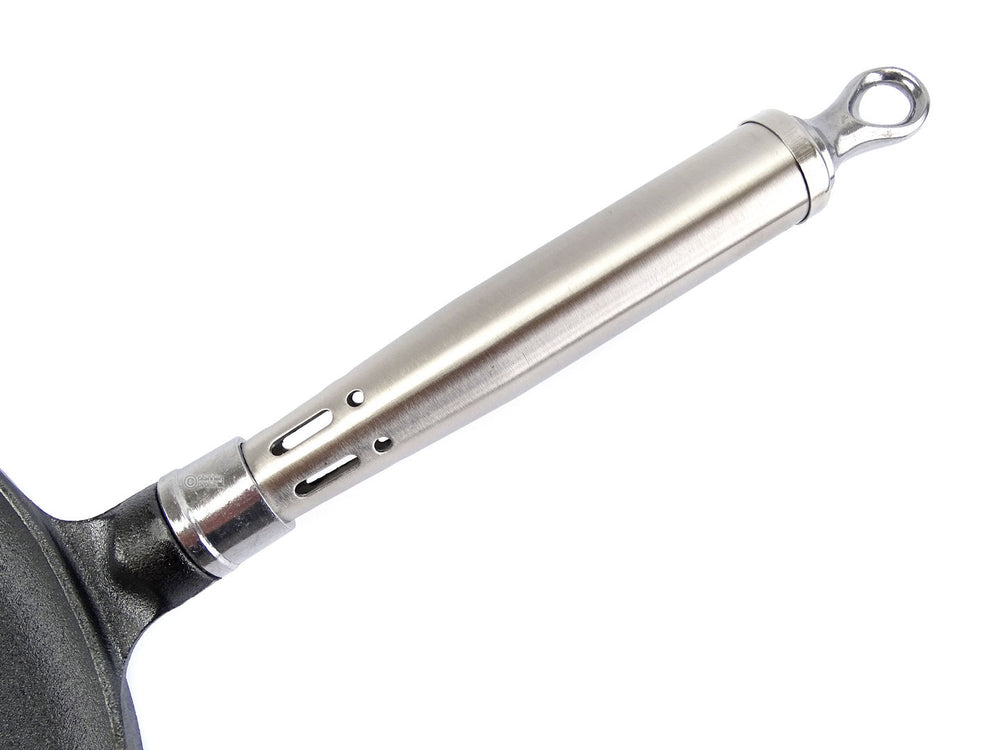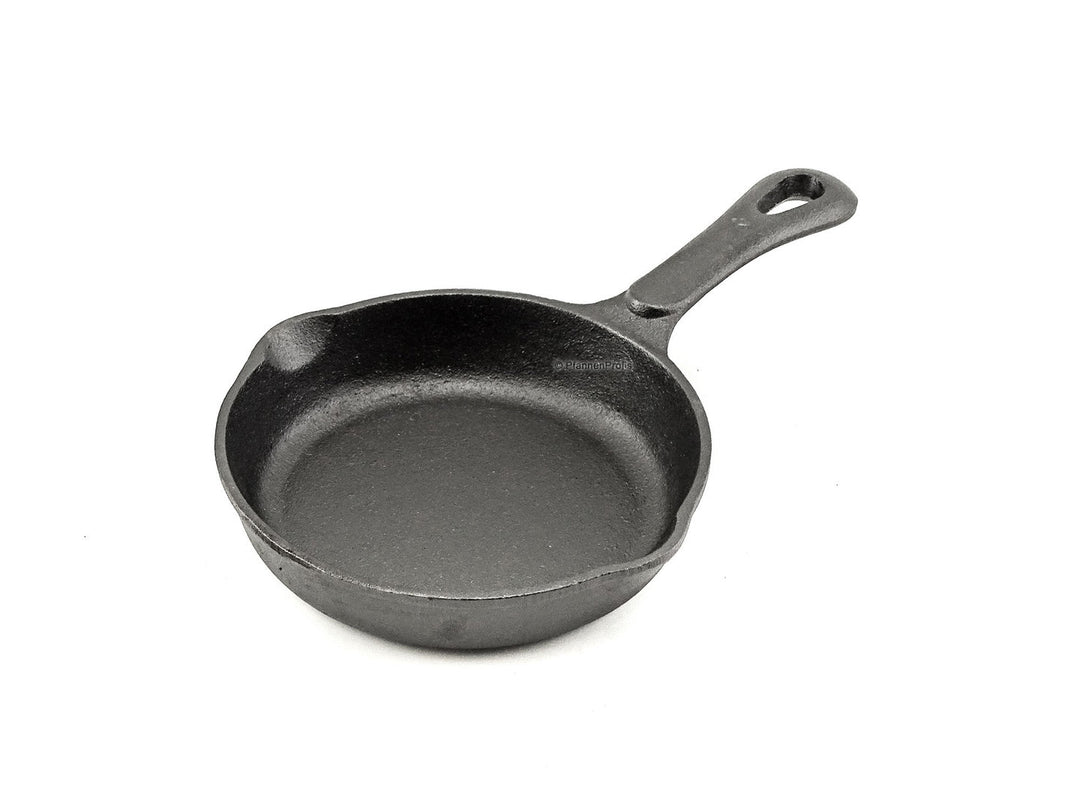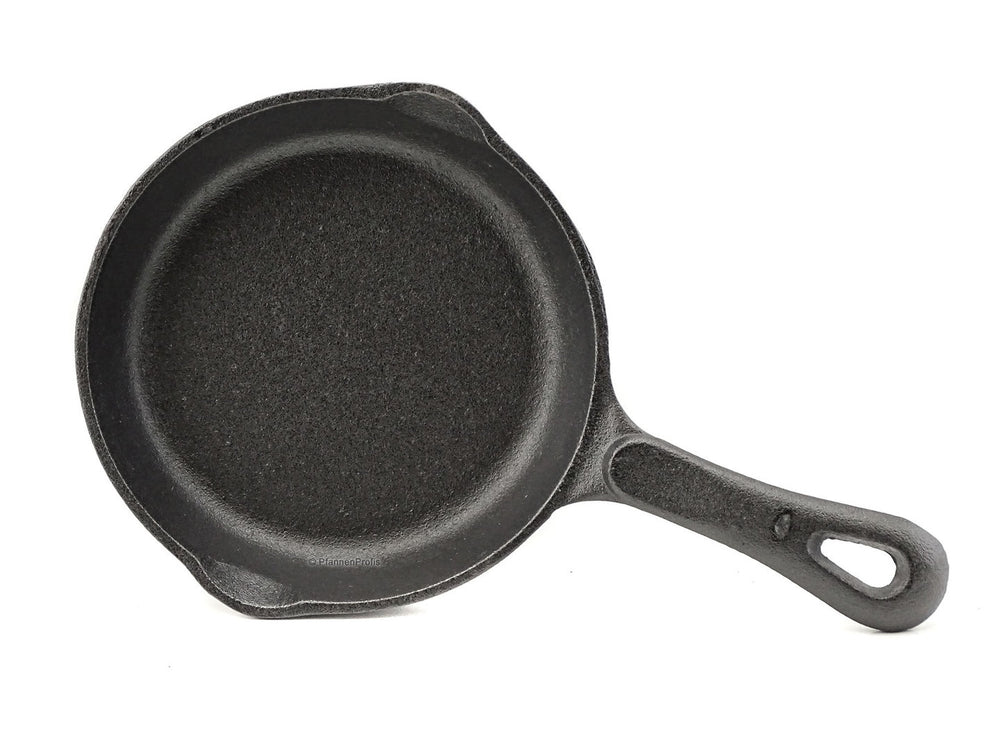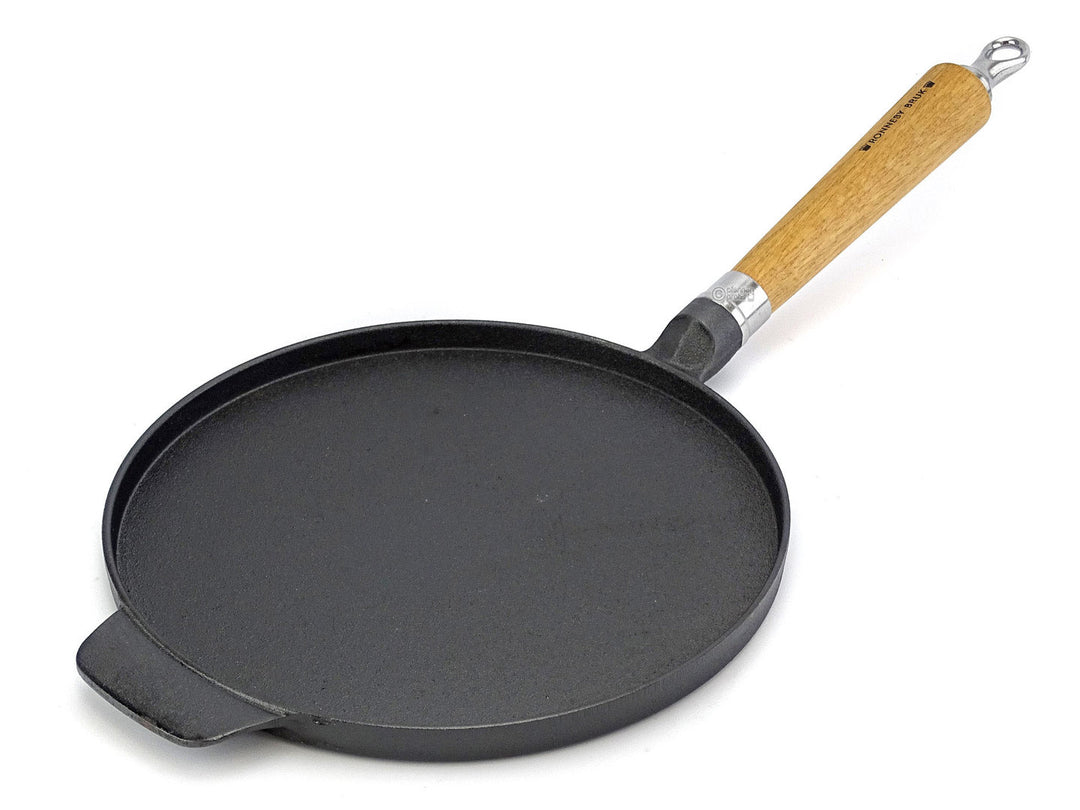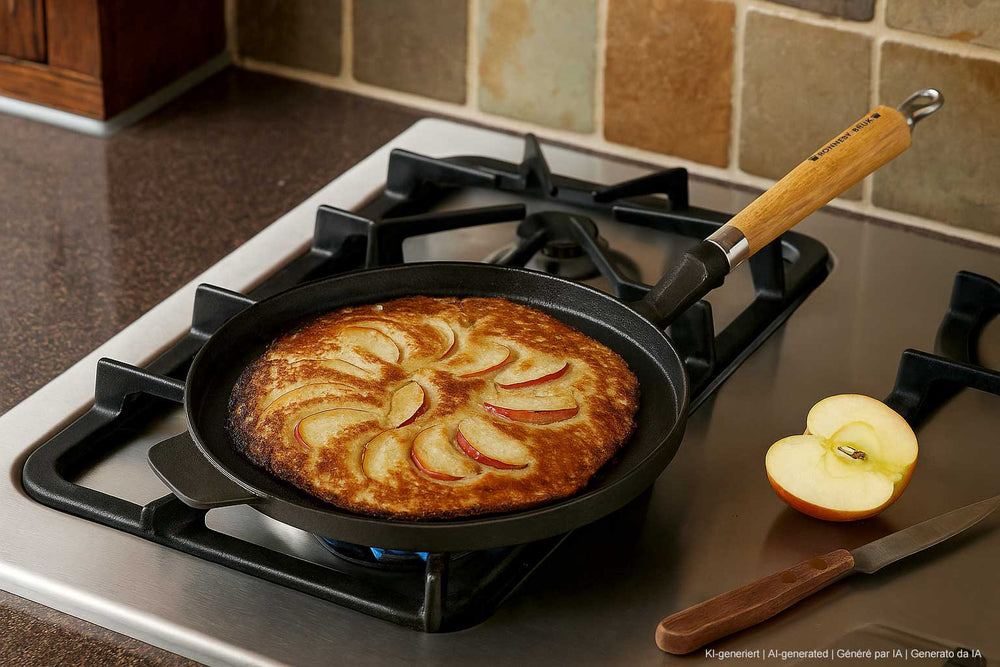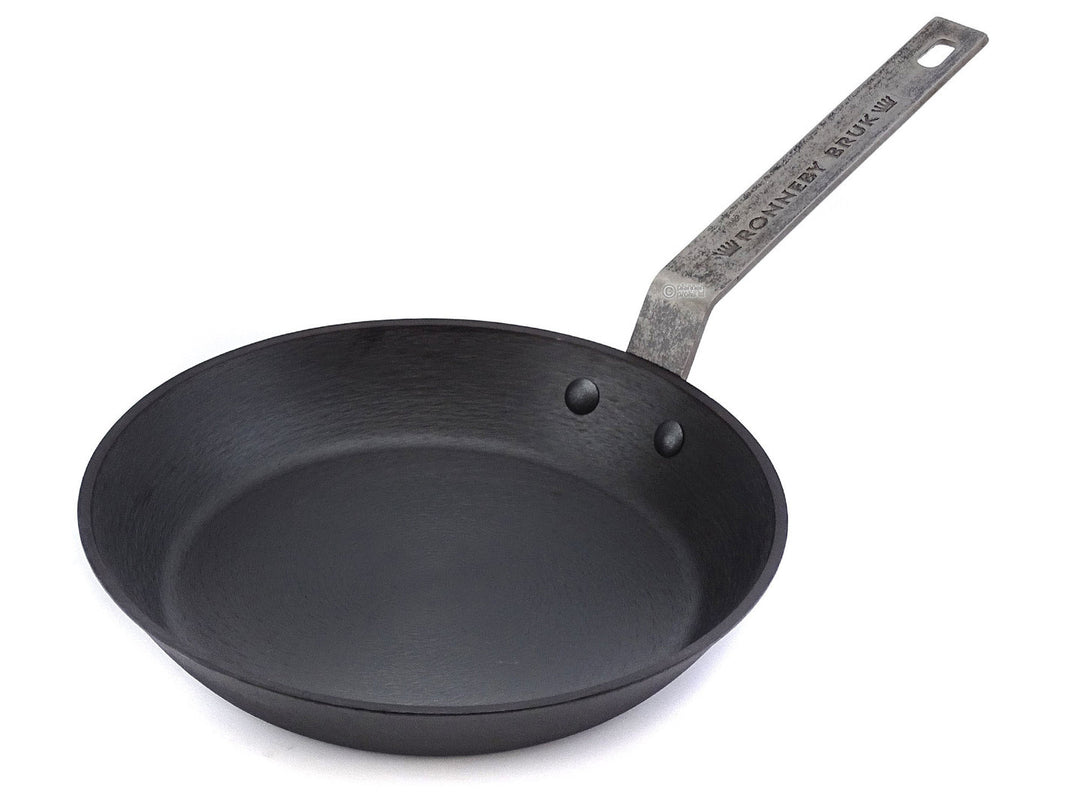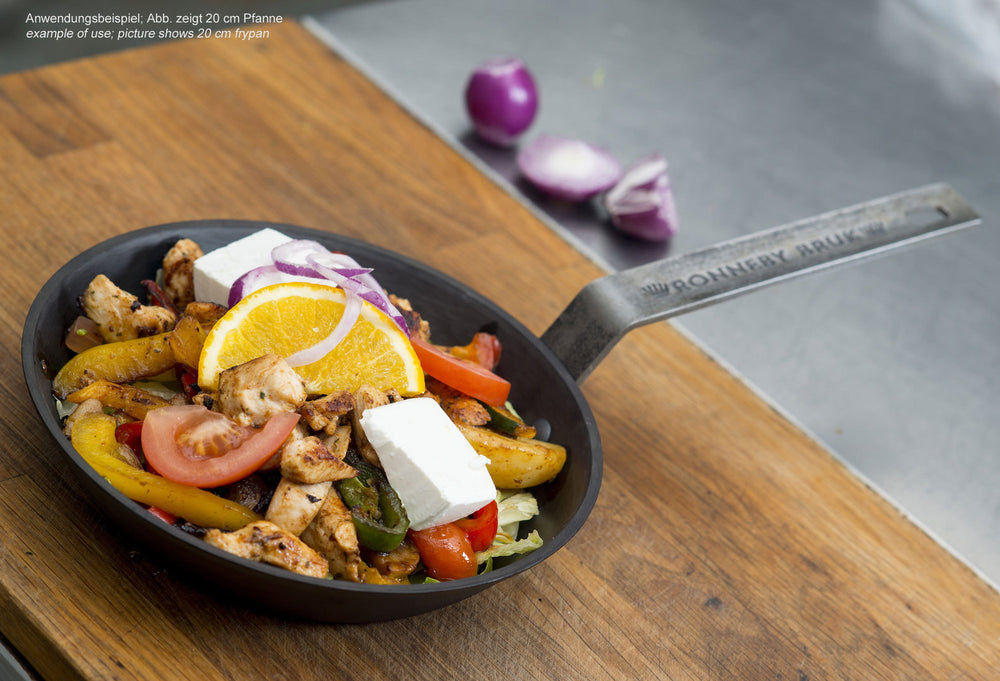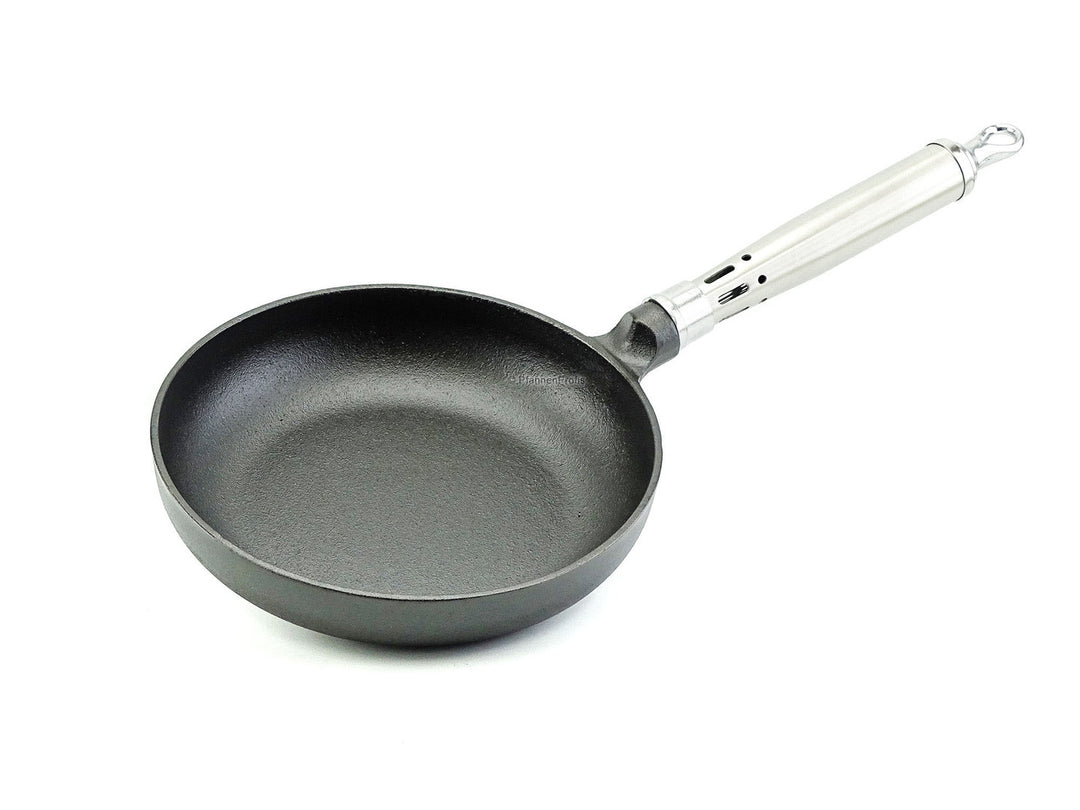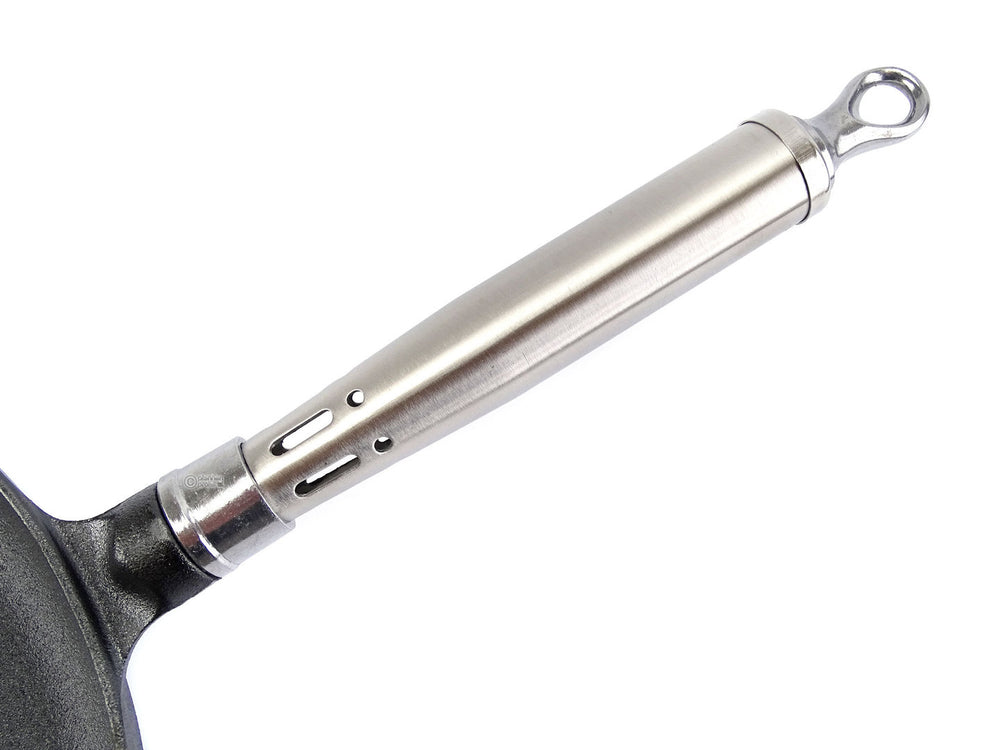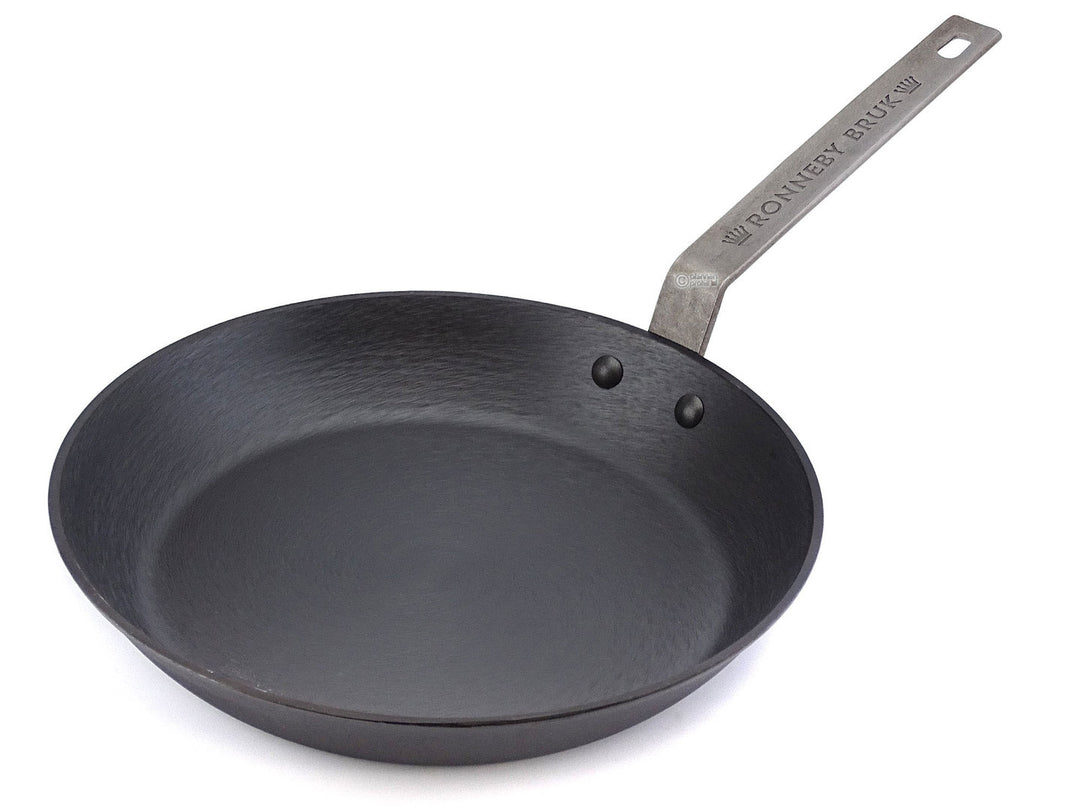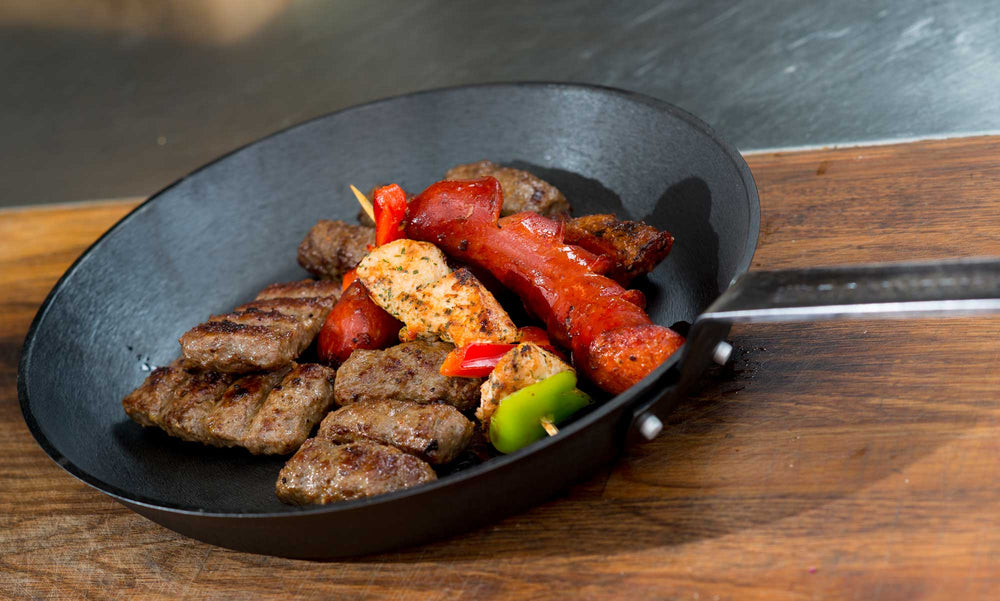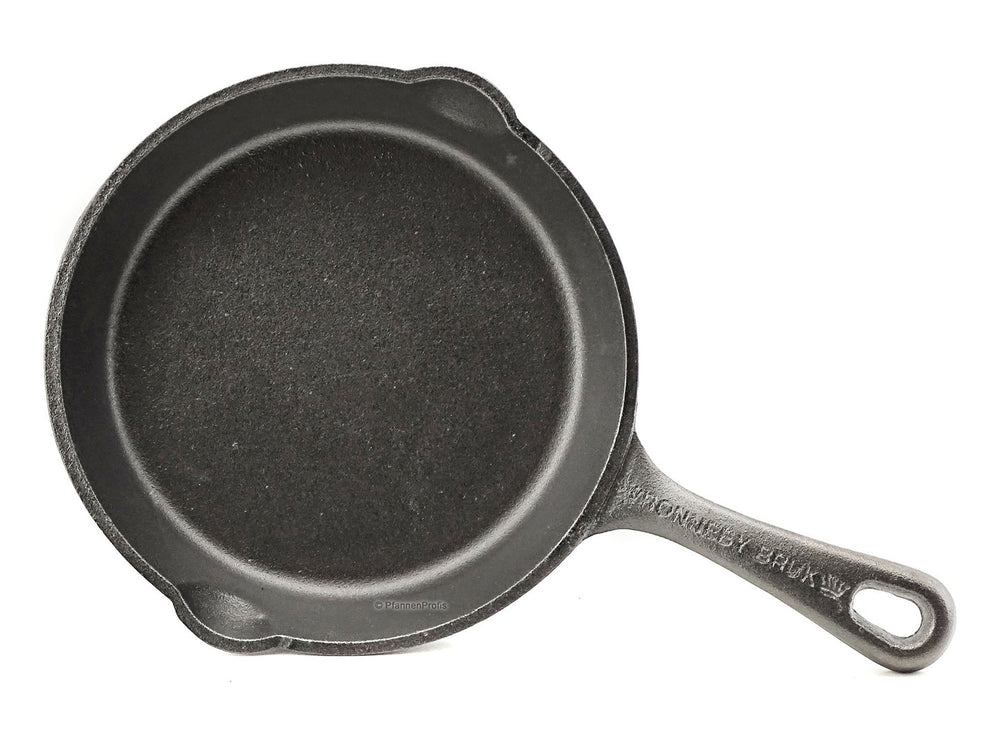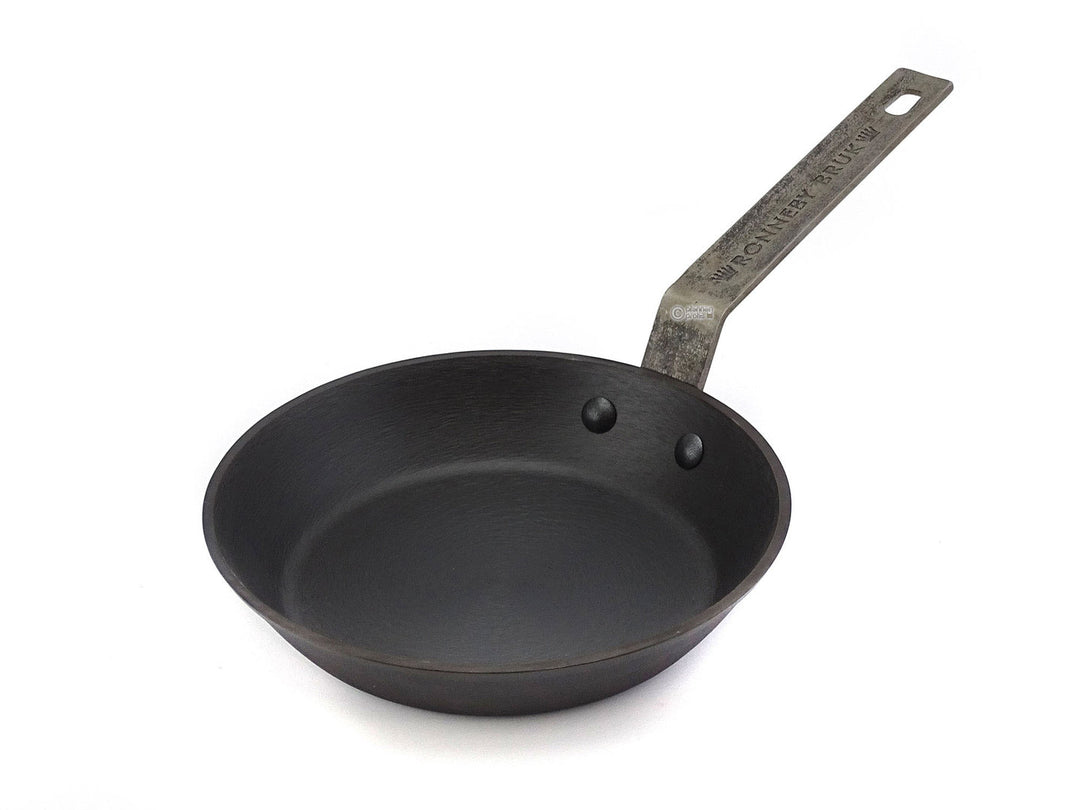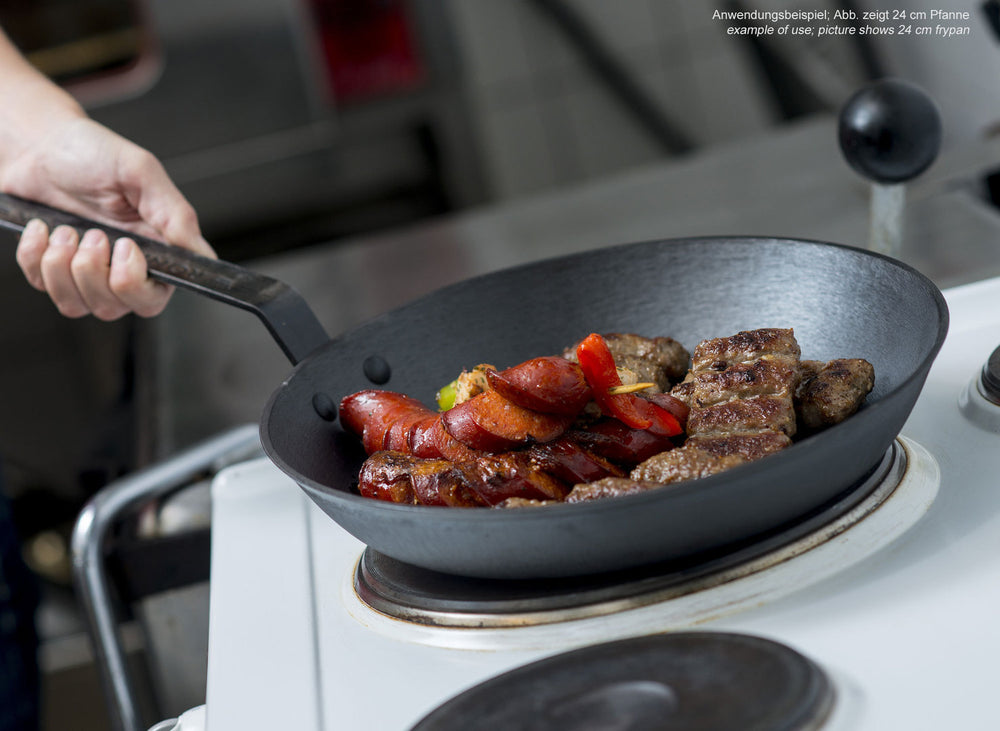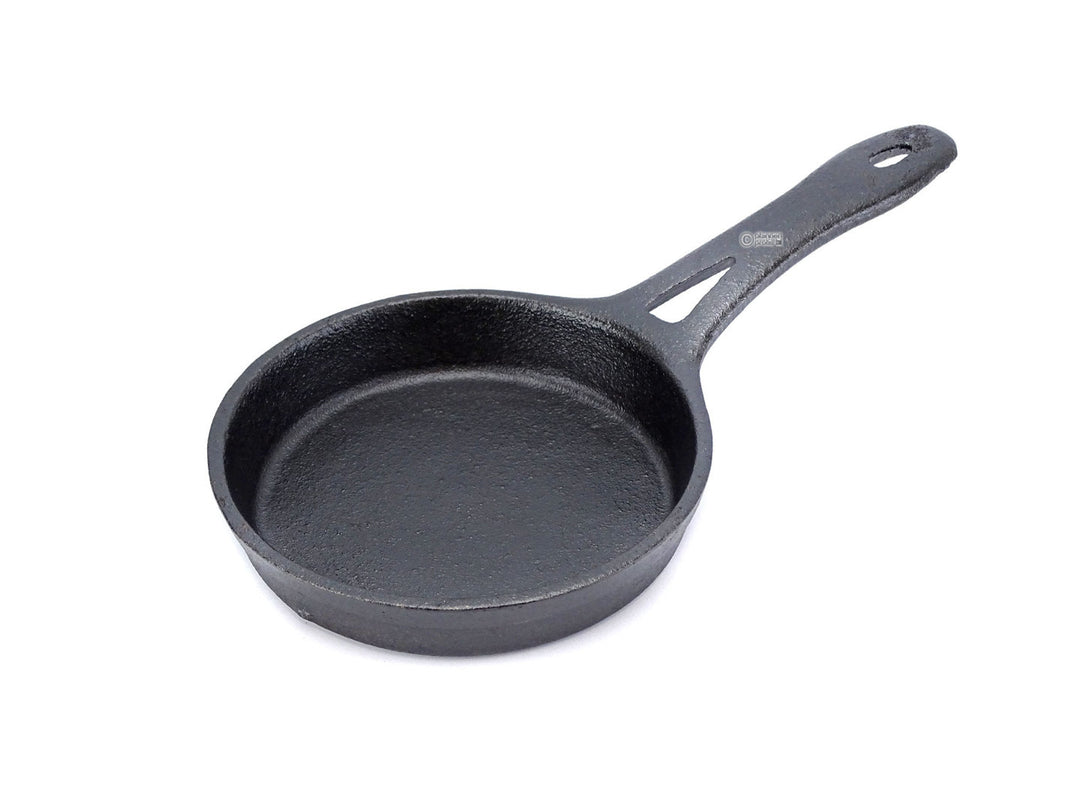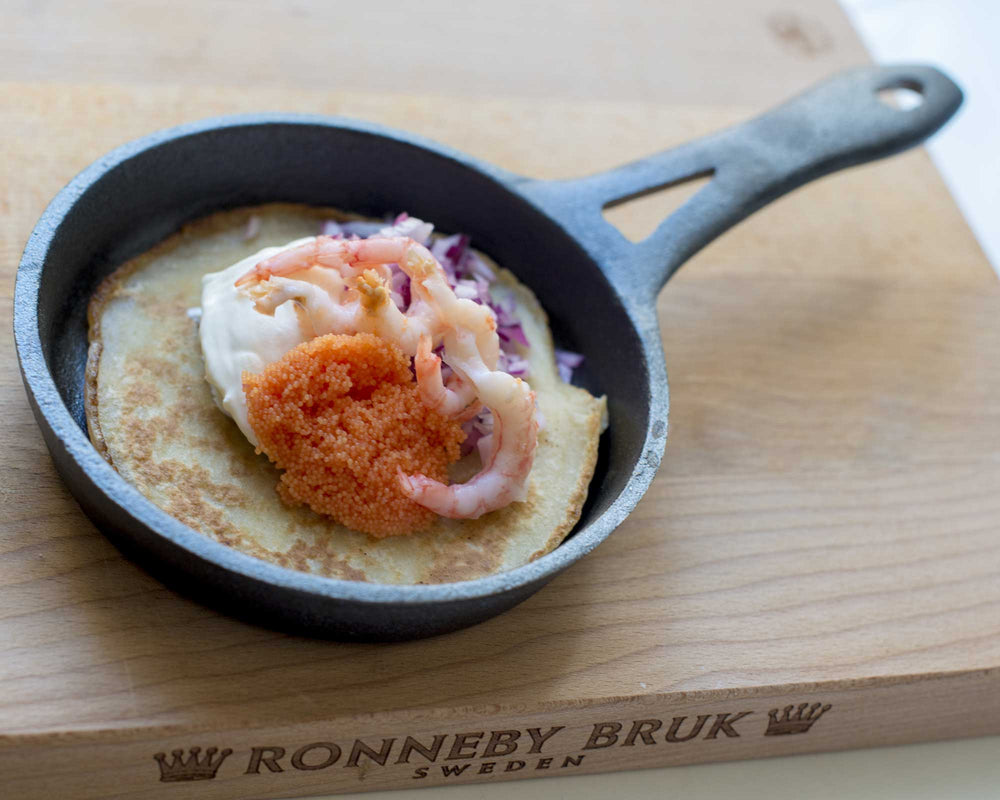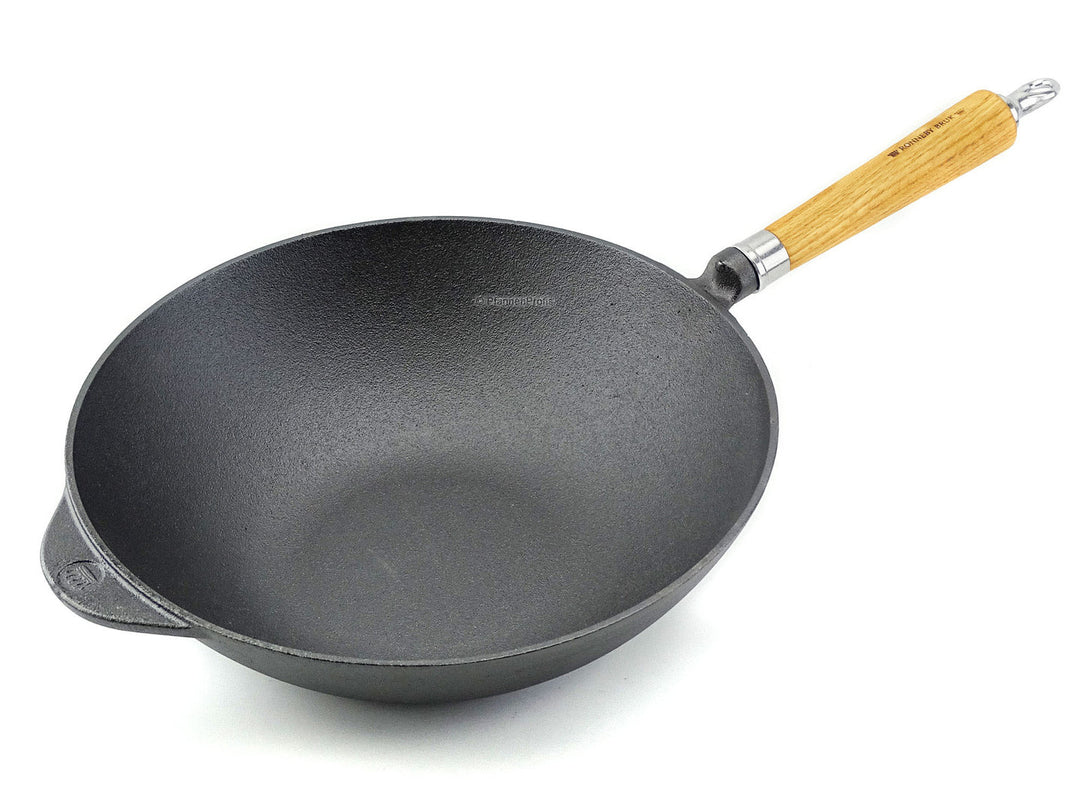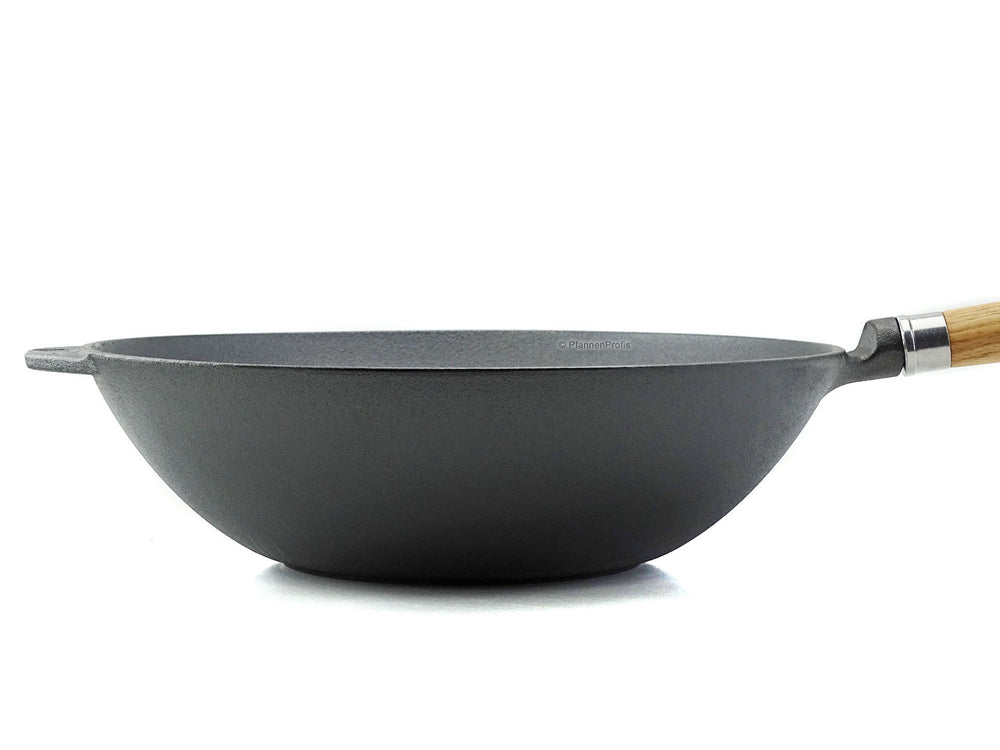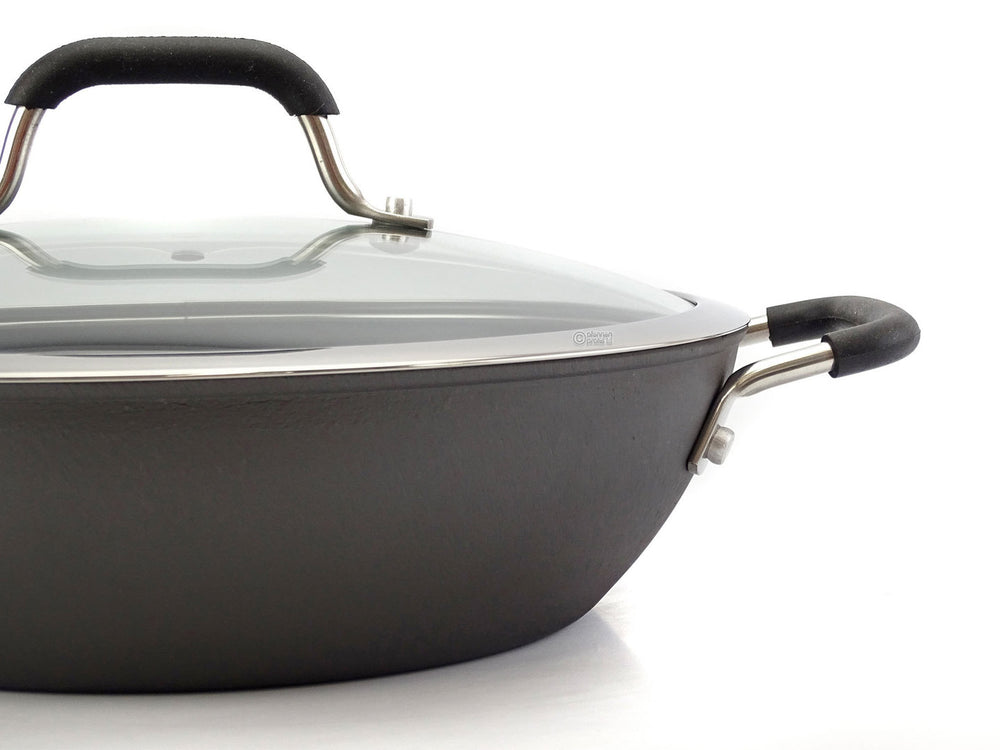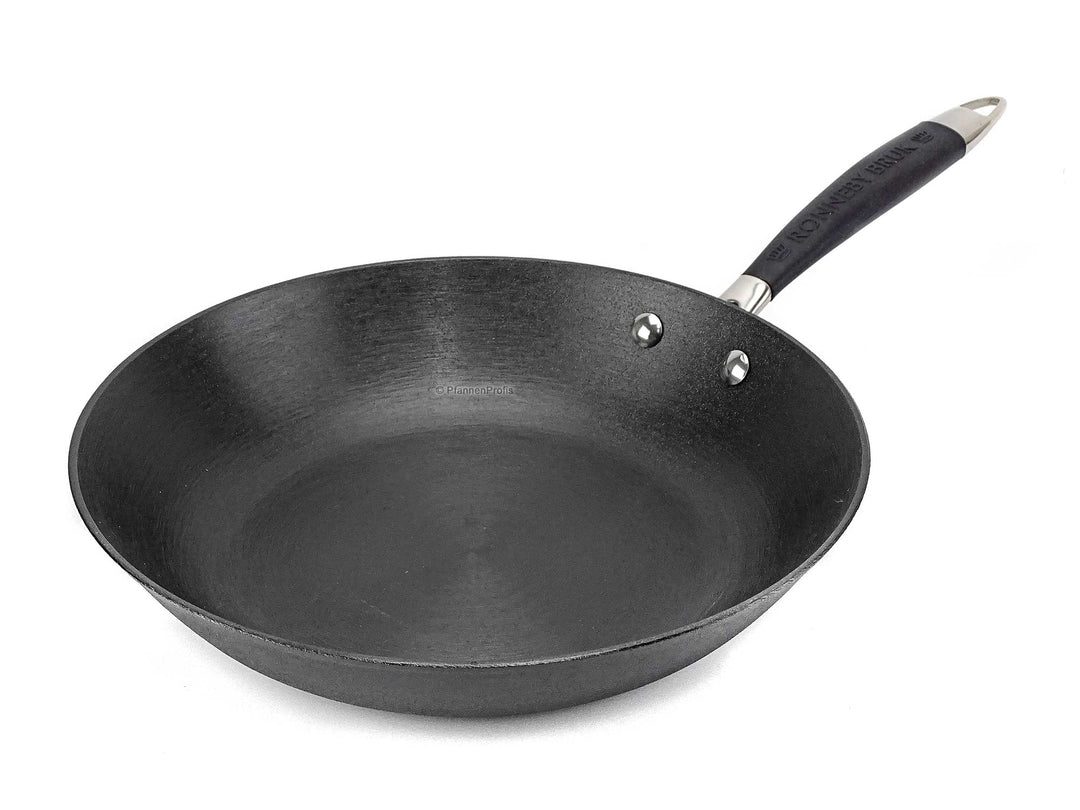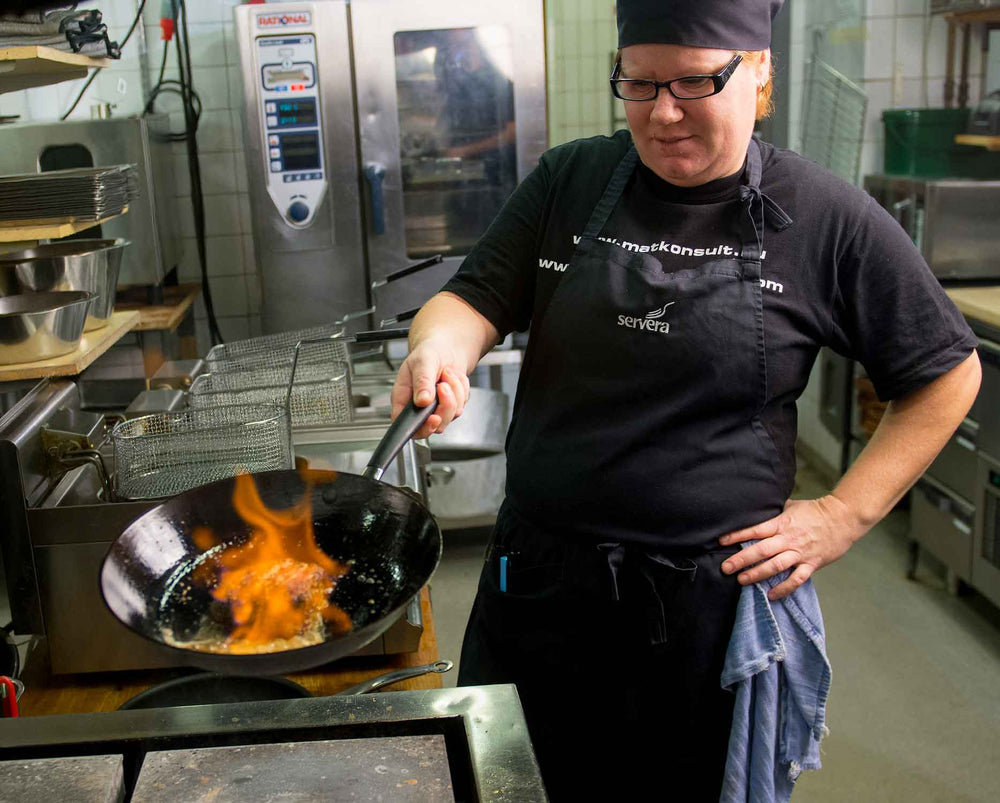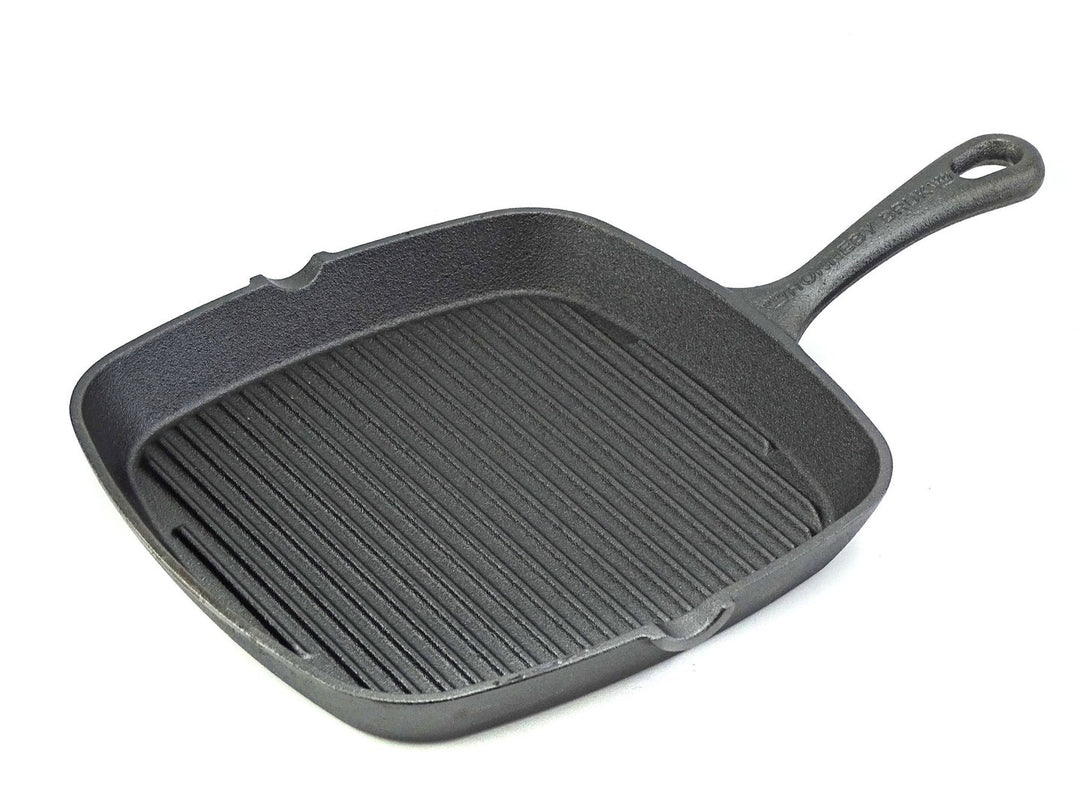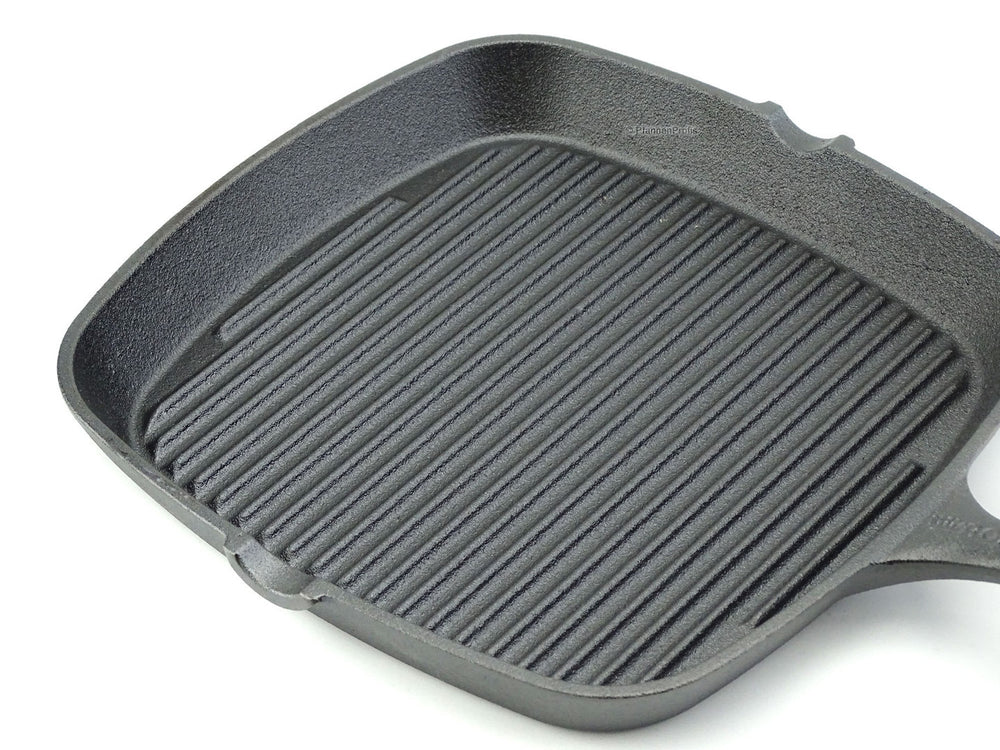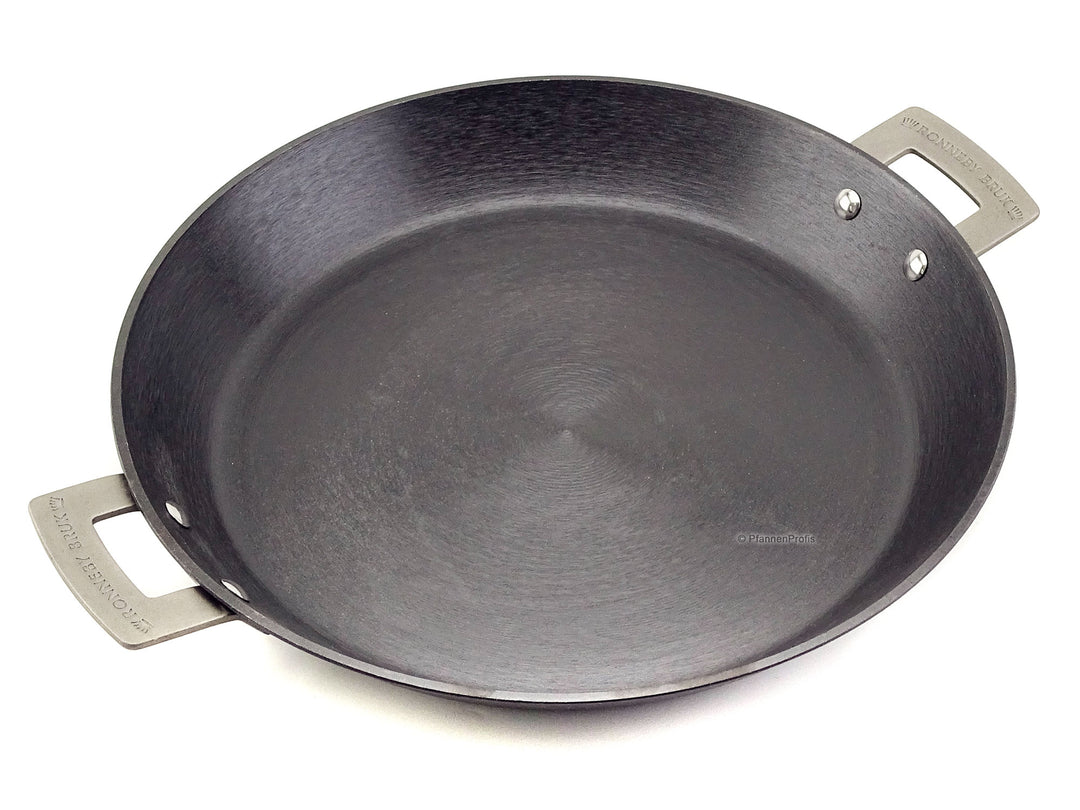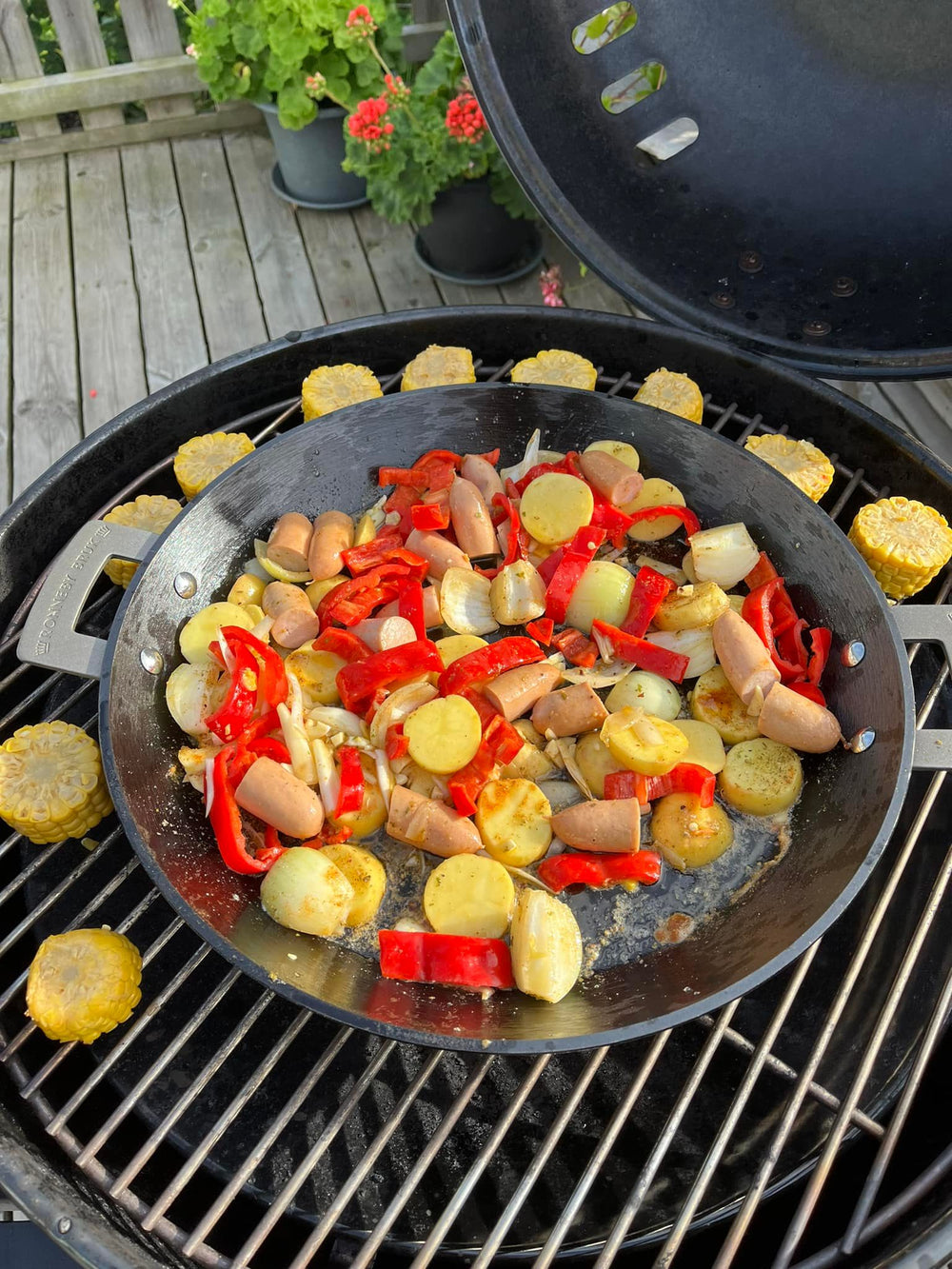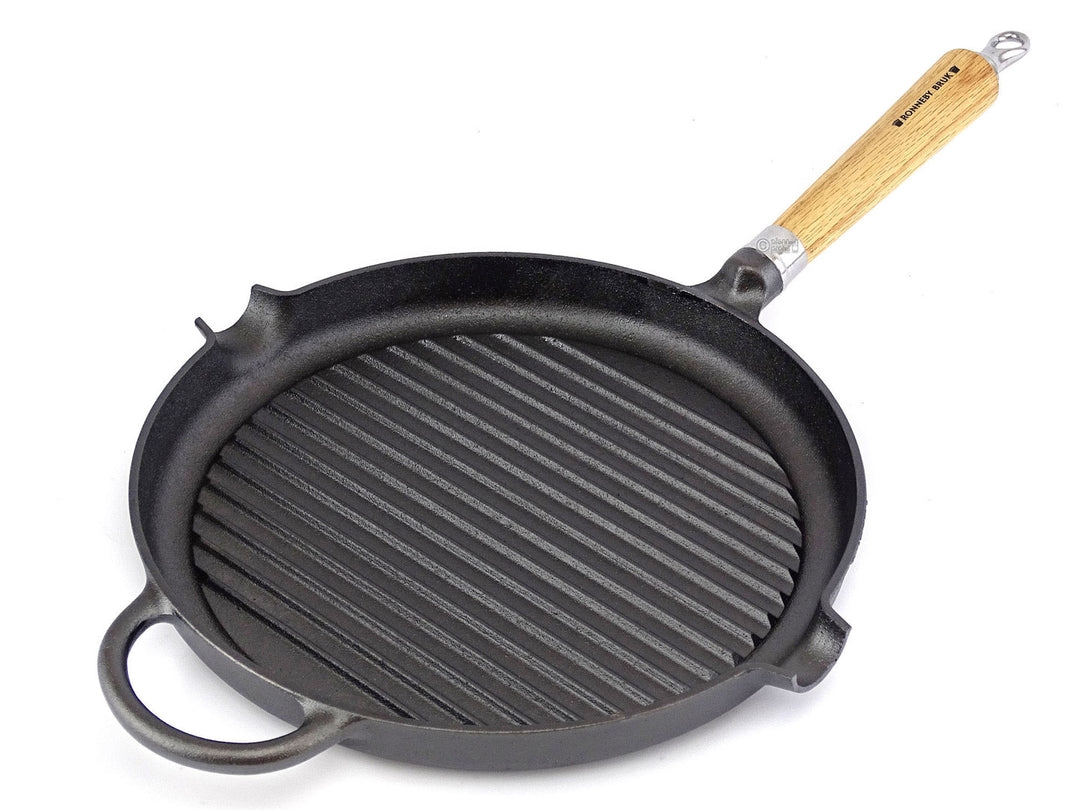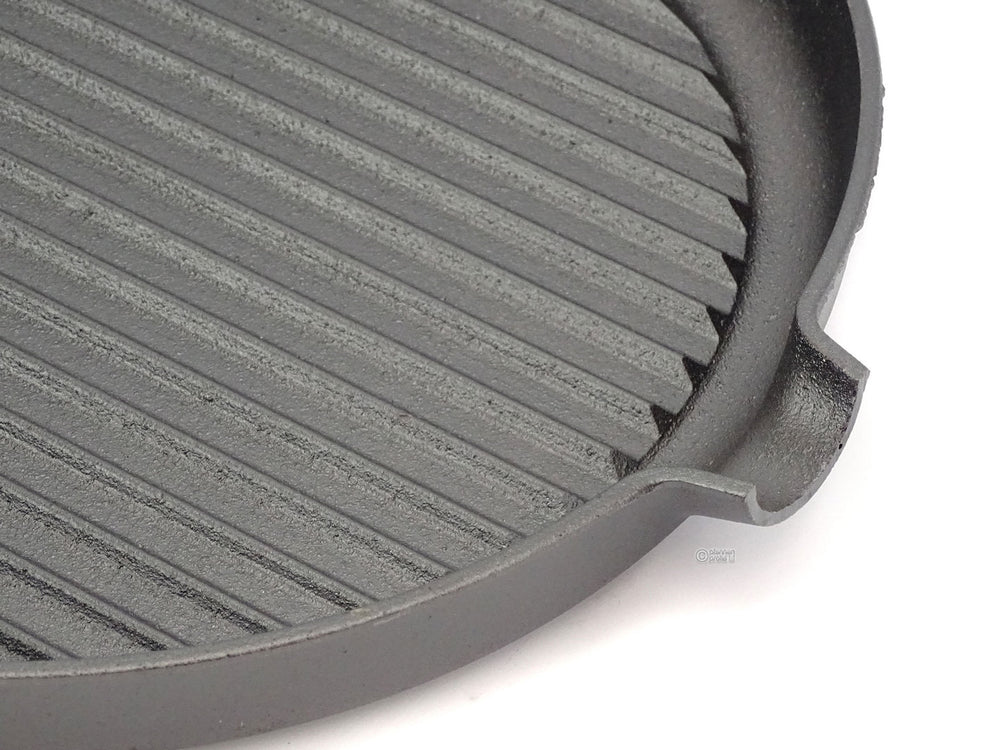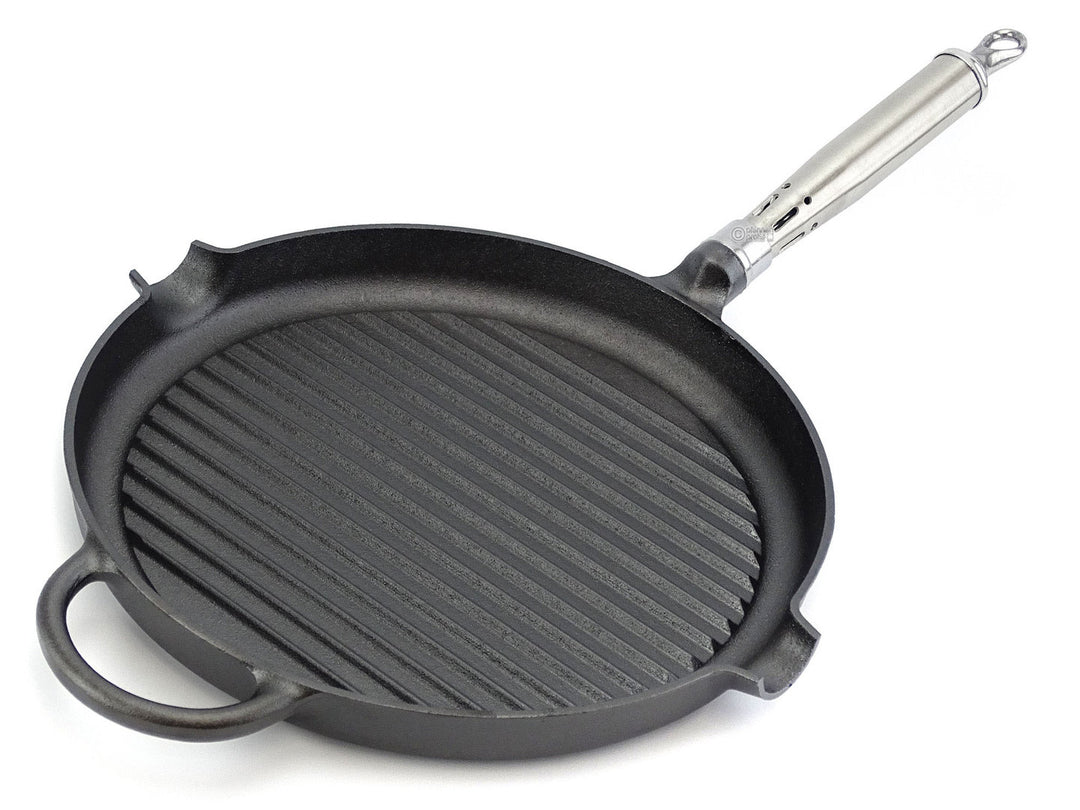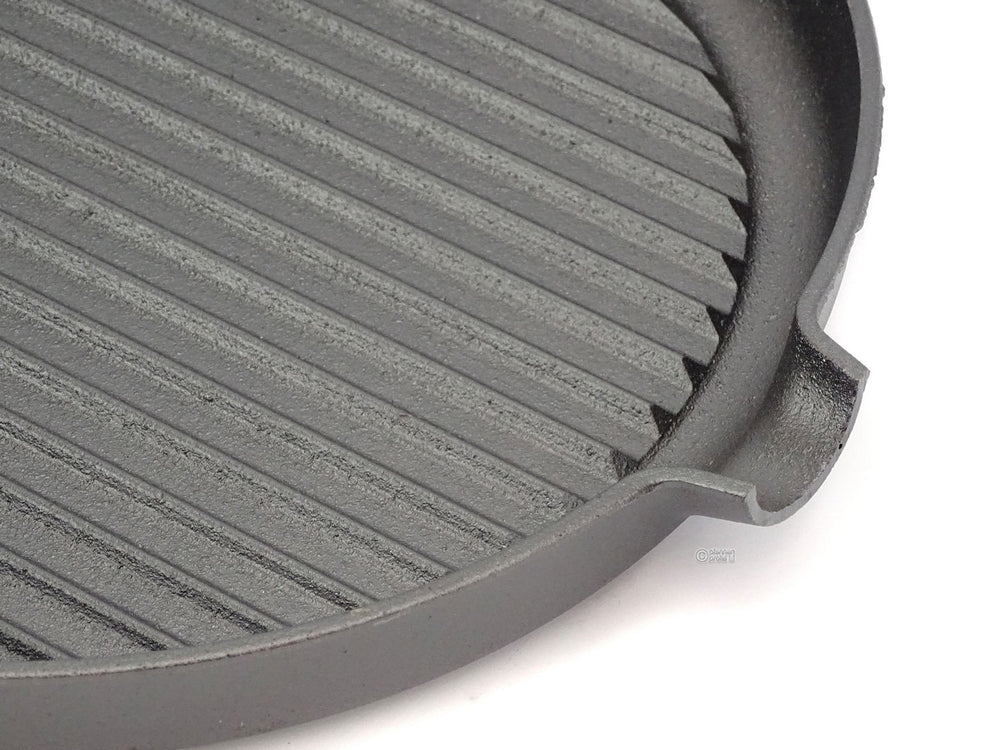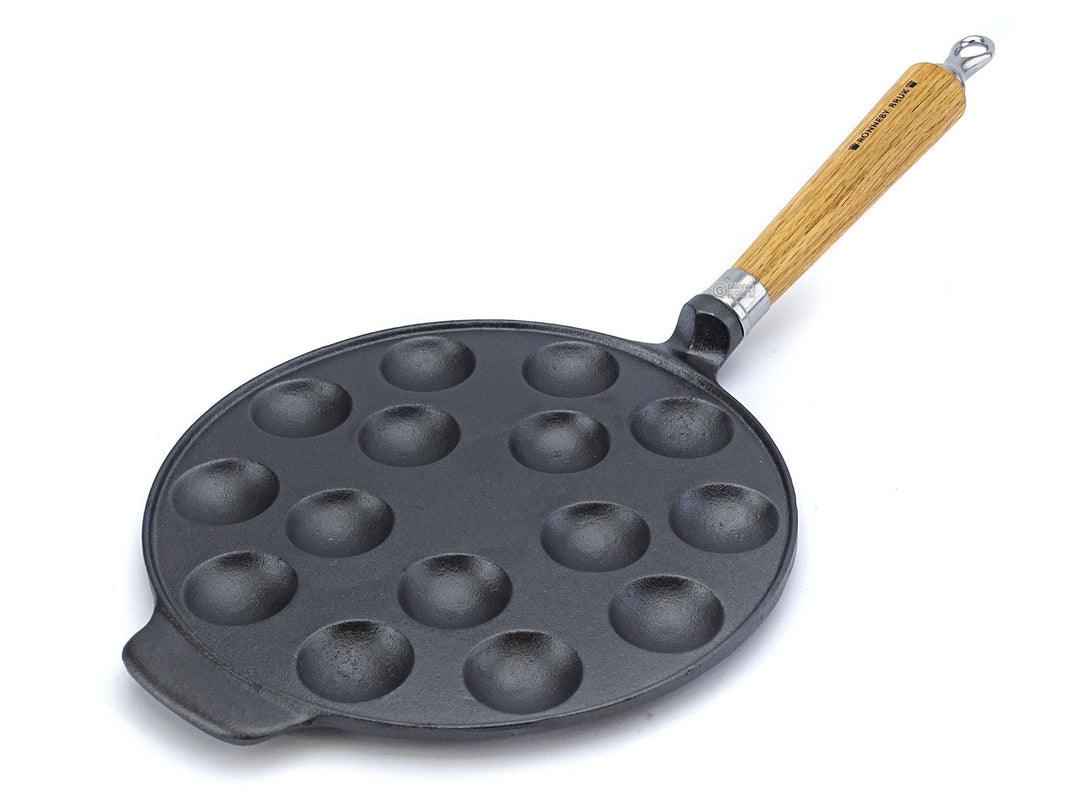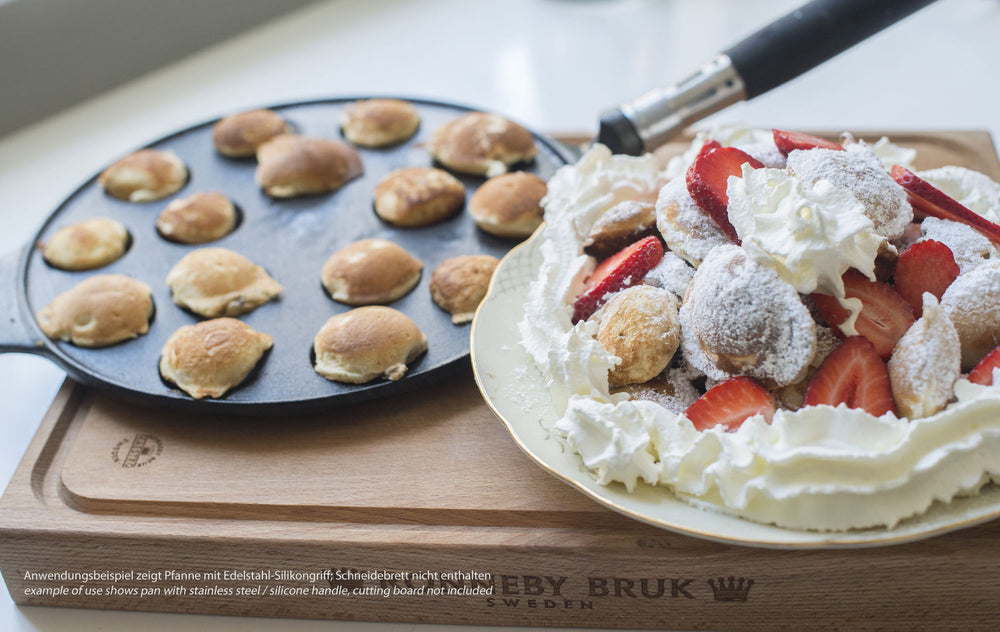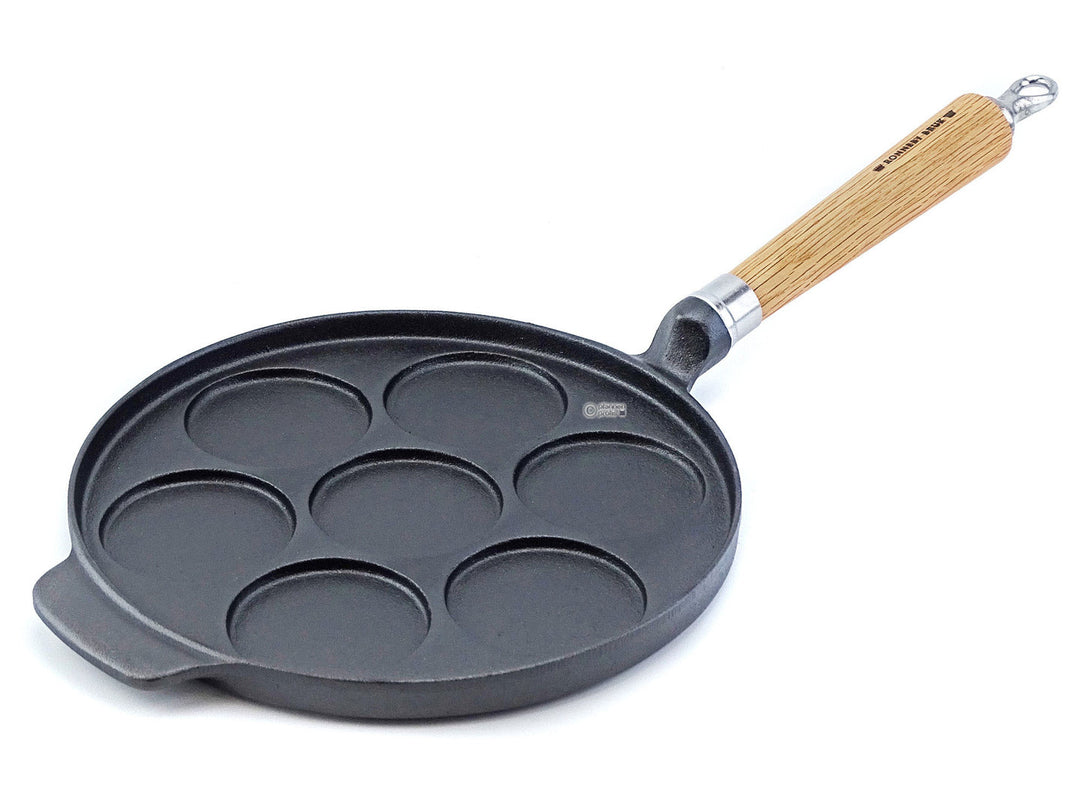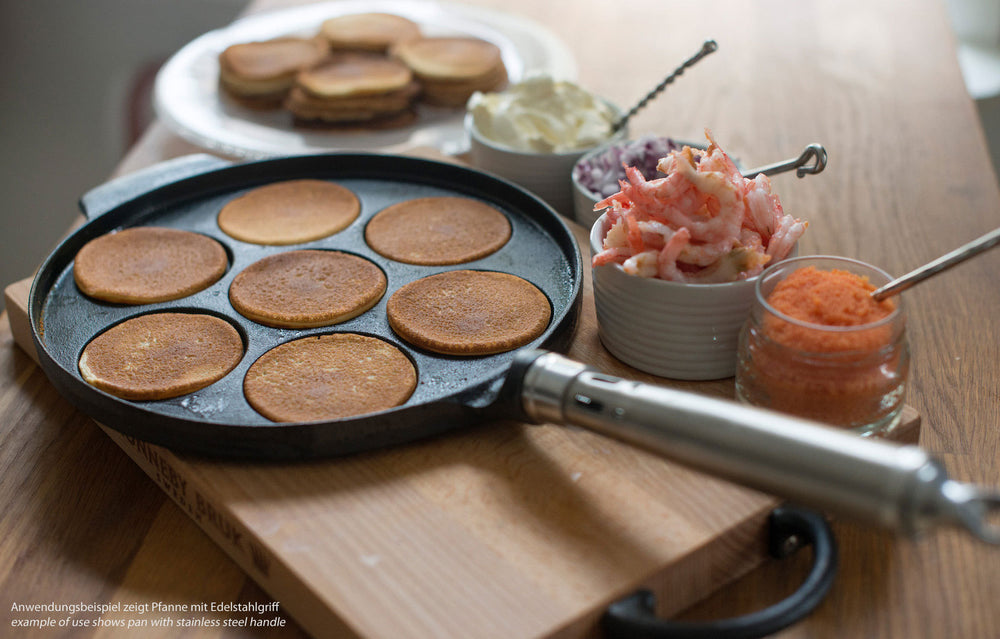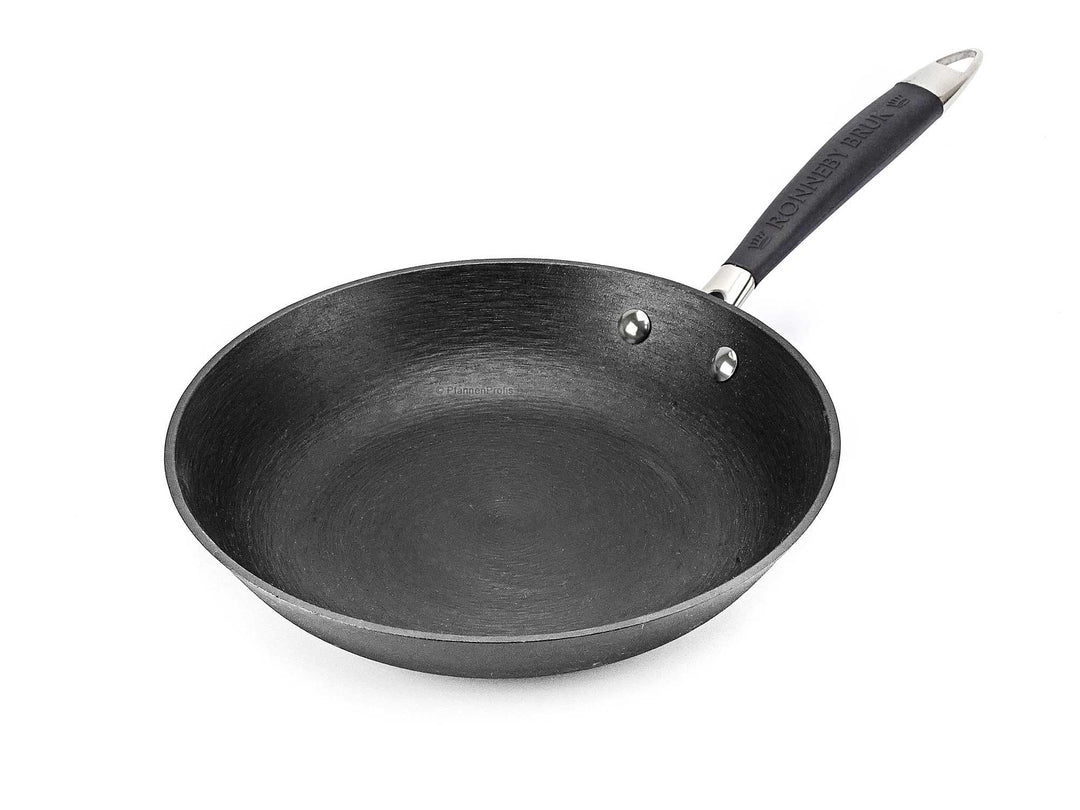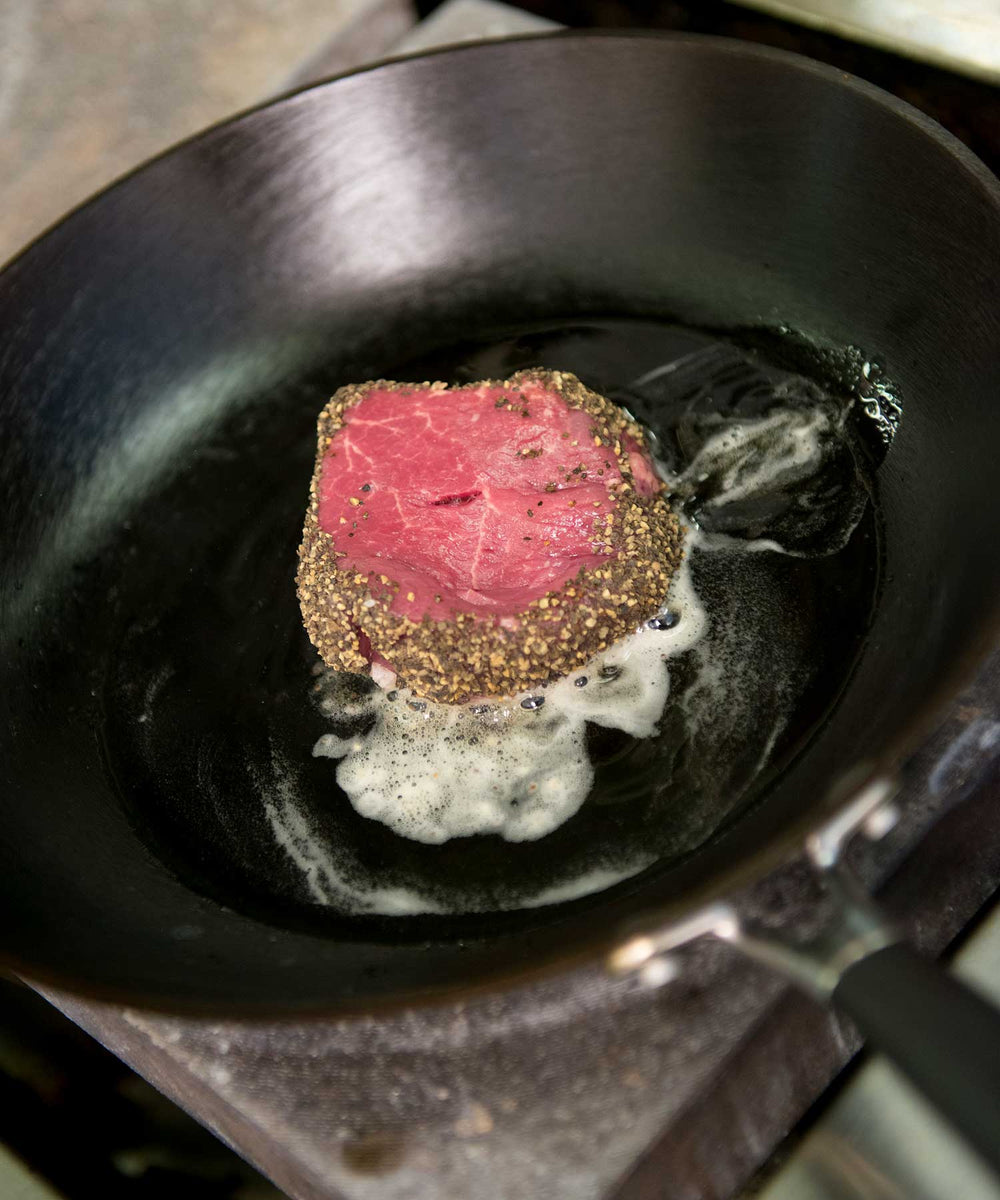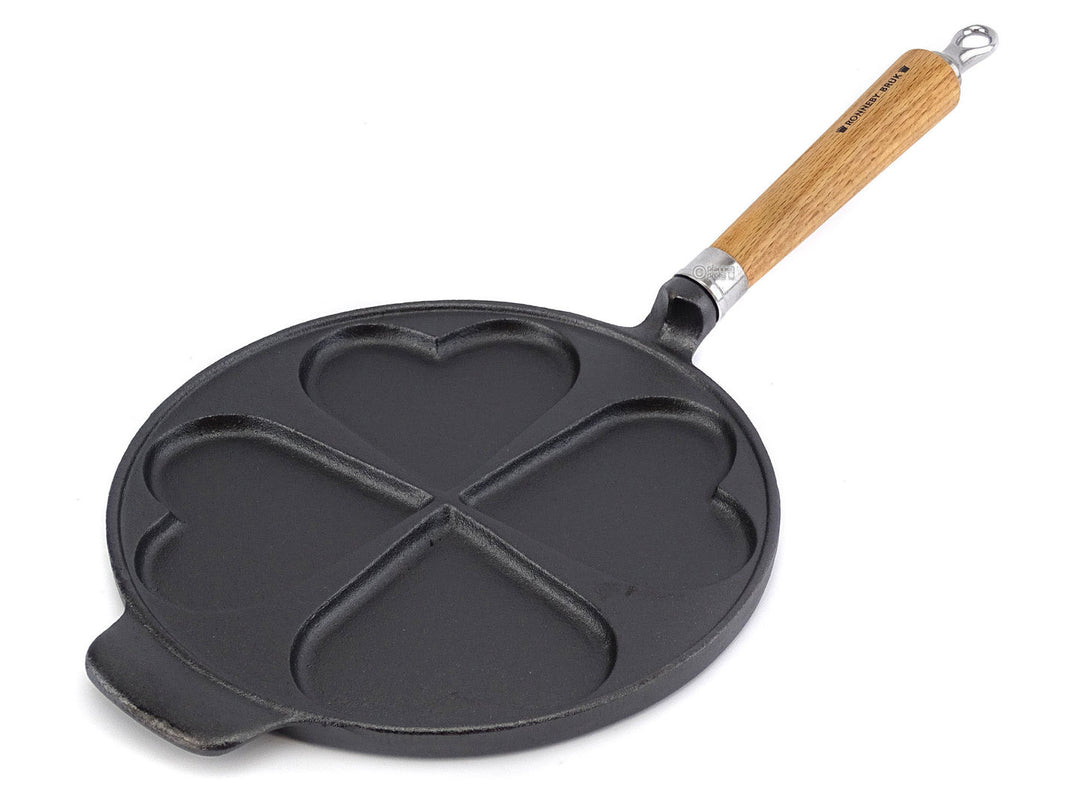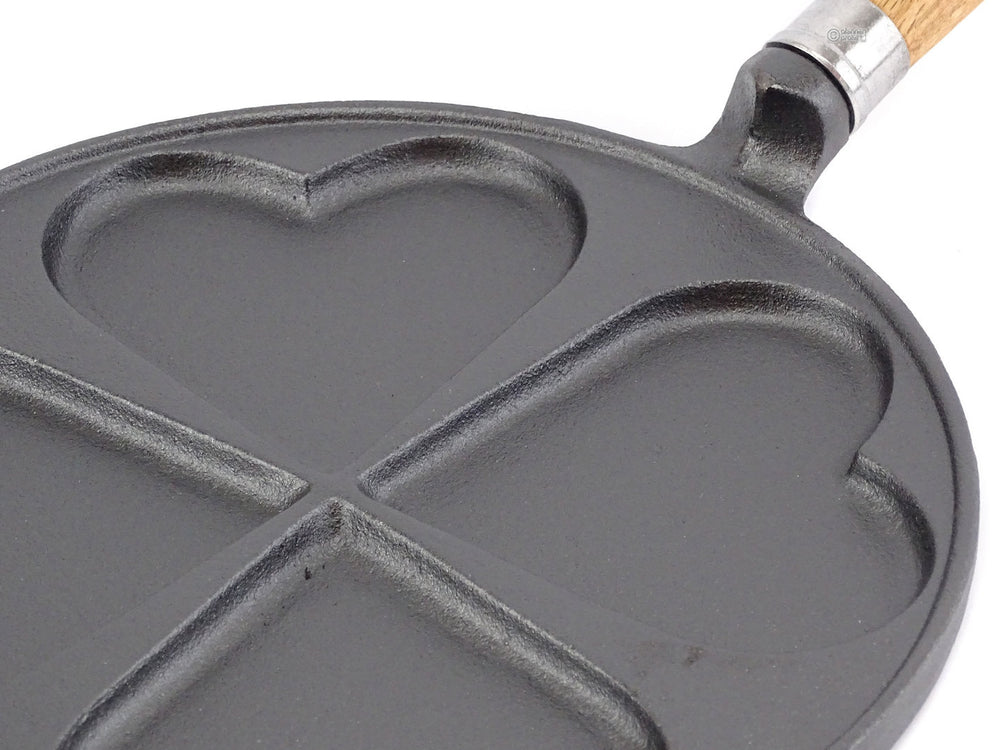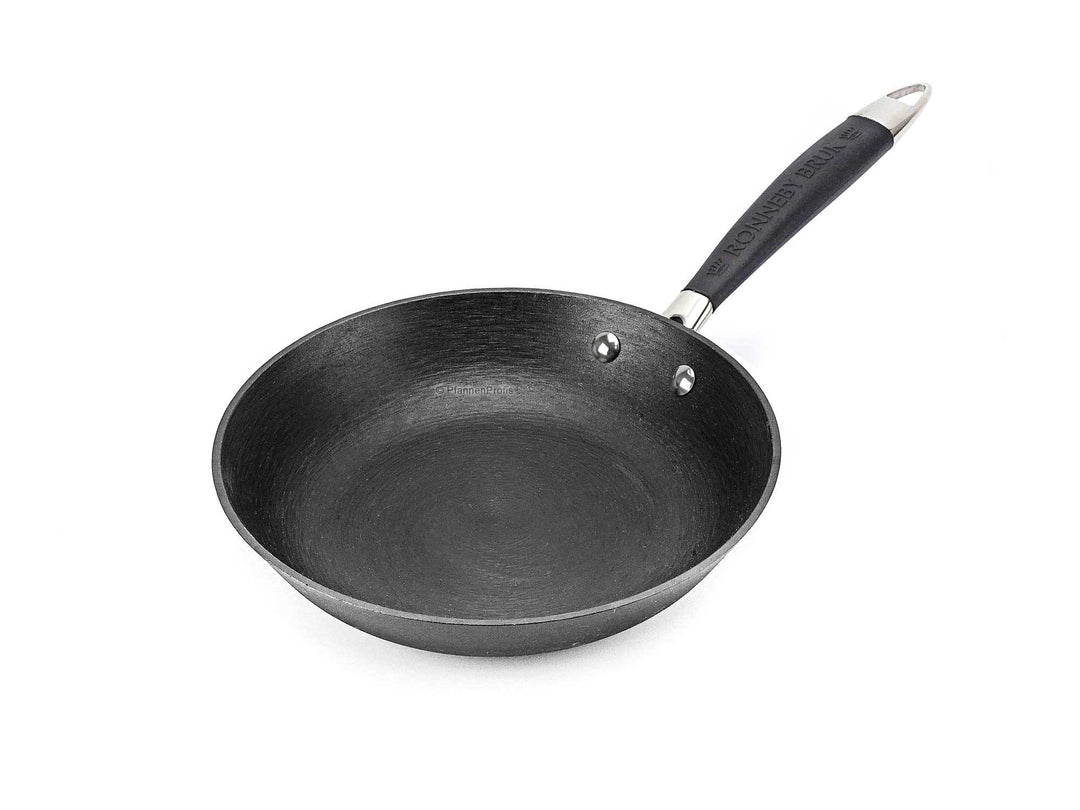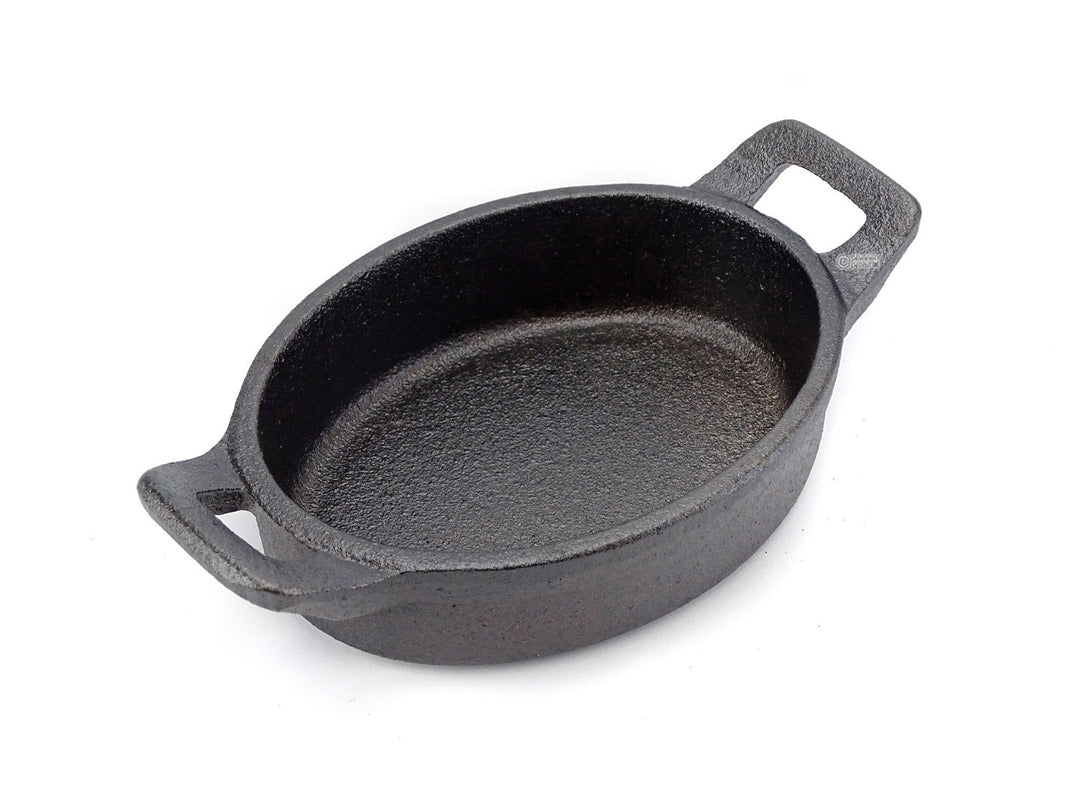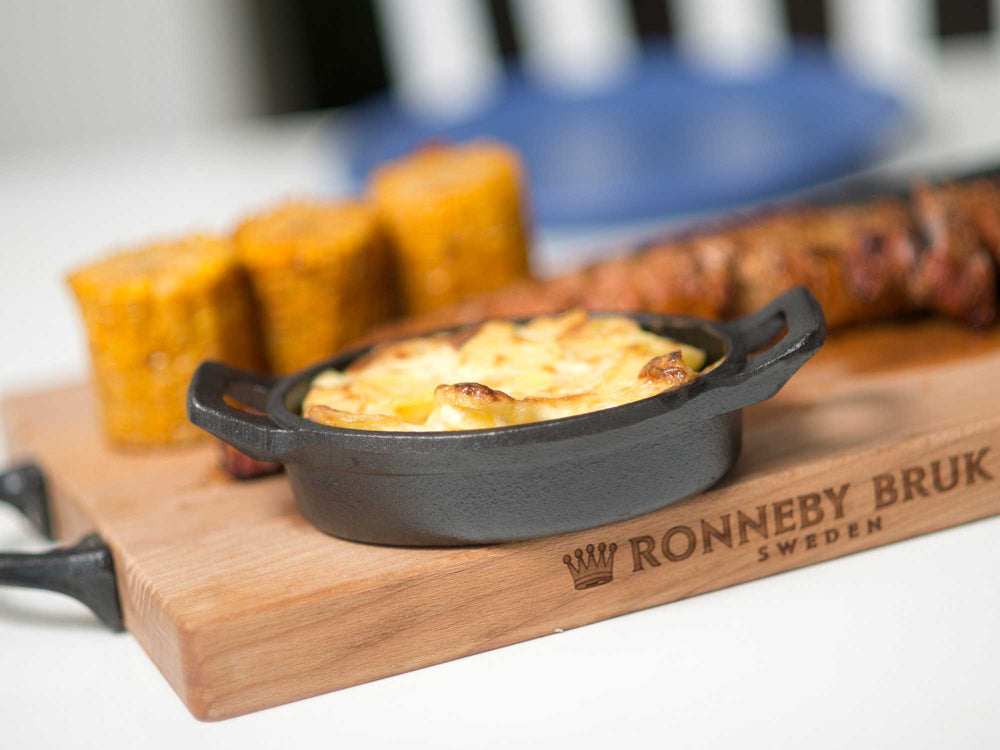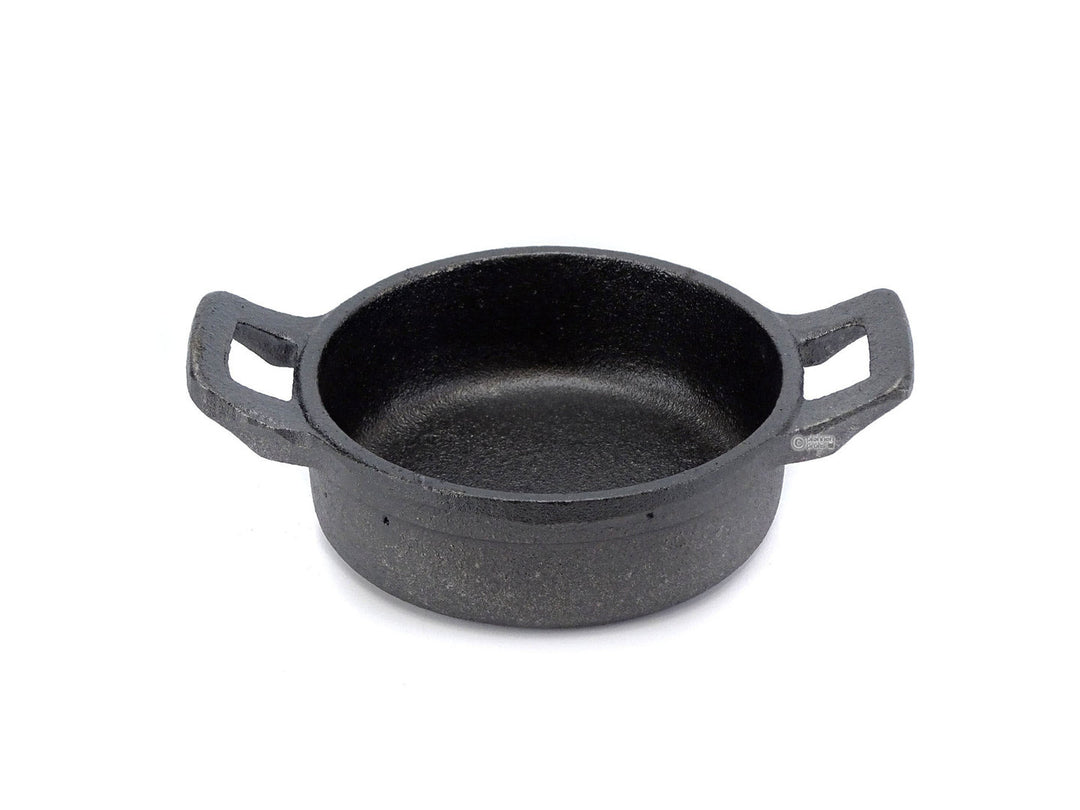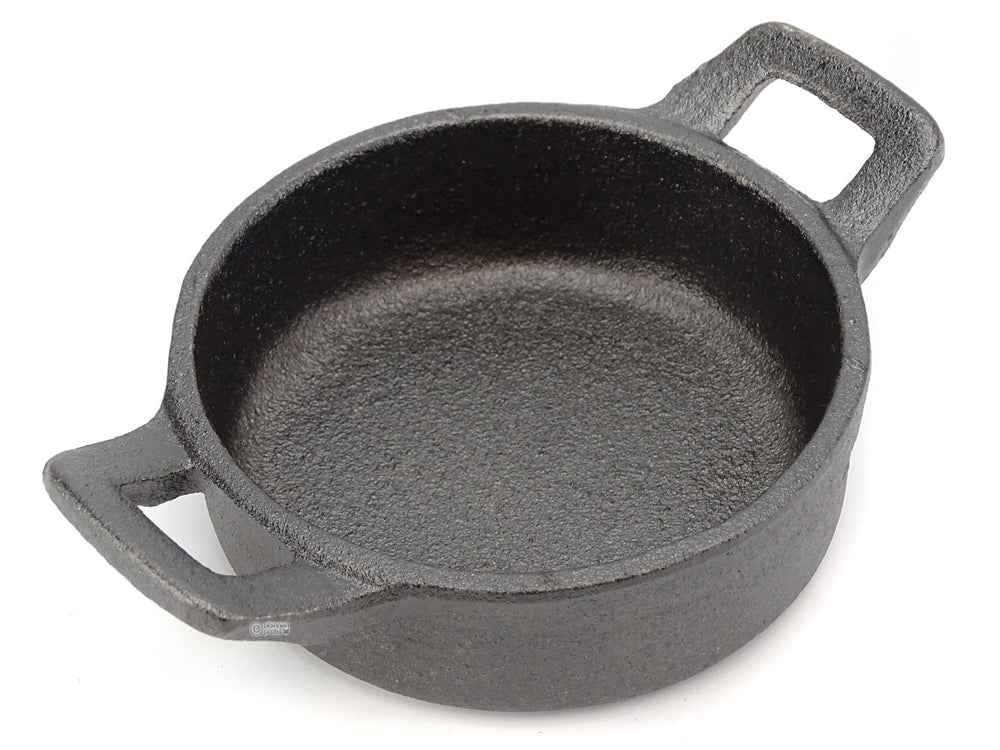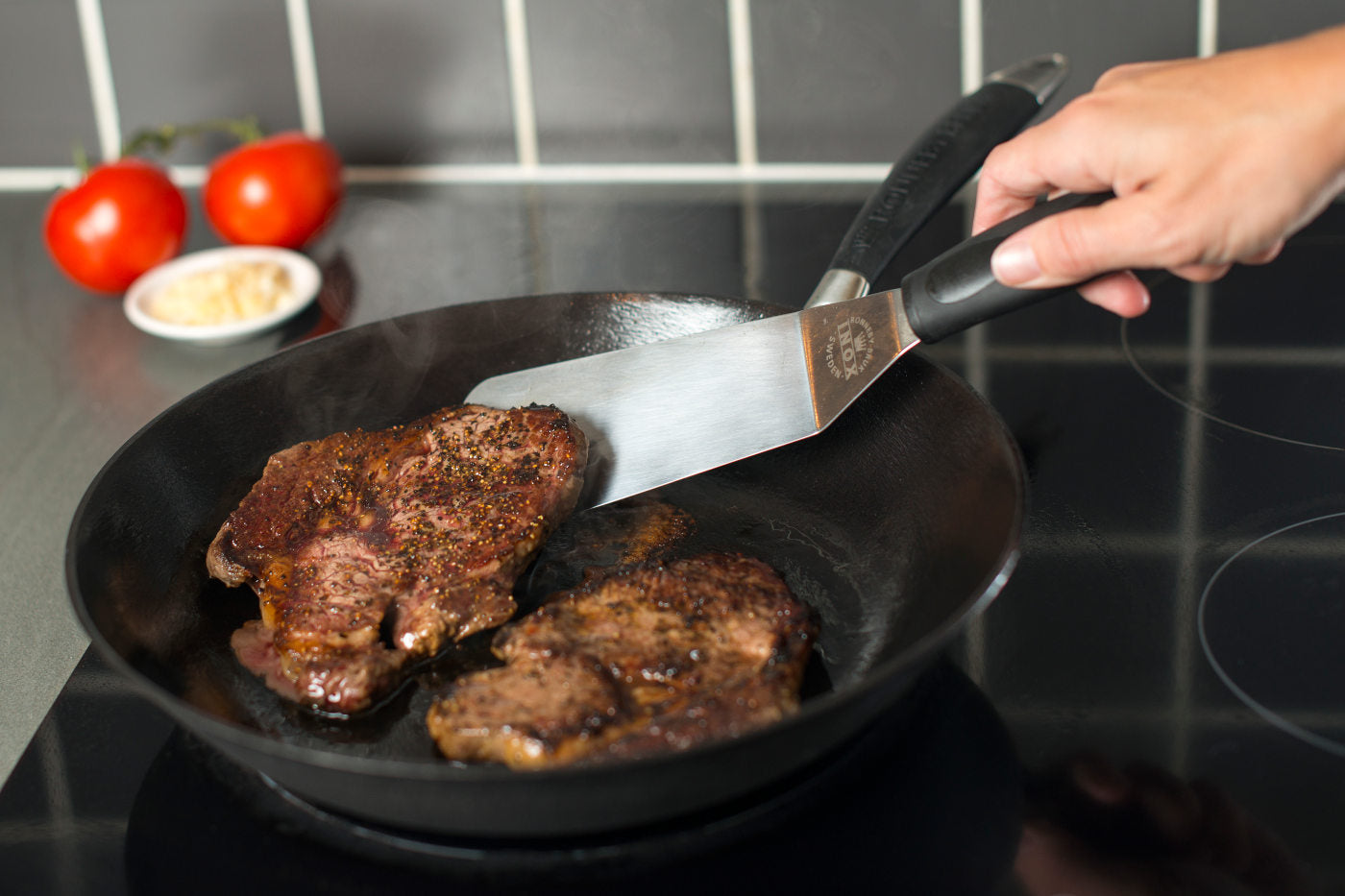
Without any artificial coating
Pans made from raw cast iron
Extremely robust and durable, last for generations. Pre-seasoned in the factory.
Frequently asked questions about raw cast iron pans
NO, absolutely not! Pans made of raw cast iron, i.e. a material completely without artificial sealants or coatings, rust easily. Although the seasoning layer makes frying easier, it does not provide comprehensive protection against rust. The dishwasher is therefore absolutely taboo for raw cast iron!
Yes, cast iron is ideal for induction. However, please note that cast iron pans should always be heated slowly and in stages, especially on induction, to avoid stresses in the material caused by the lightning-fast heating possible on induction. The maximum stove power should be avoided, as should the power/booster level of the induction hob. Otherwise, in extreme cases, the cast iron cookware may break due to thermal stress.
This depends on the handle: cast iron pans with wooden handles do NOT belong in the oven, as the wood would dry out in the oven and crack.
Cast iron pans with a stainless steel handle or integrated cast iron handle are generally ovenproof without restrictions.
Raw cast iron pans have no artificial coating and are therefore extremely robust and, in principle, scratch-resistant. However, metal kitchen utensils, forks or knife edges can damage the baked-on coating or patina. We therefore recommend the use of wooden/bamboo, plastic or silicone kitchen utensils in raw cast iron pans to protect the painstakingly maintained patina.
The raw cast iron pans in our range have already been pre-seasoned in the factory. This initial seasoning layer is the ideal basis for the patina that gradually forms during frying and with proper care.
We recommend frying non-sensitive foods in a new raw cast iron pan a few times first, e.g. omitting fatty bacon, before frying sensitive foods (egg dishes, fried potatoes, etc.).
If you wish, you can also add one or more additional layers to the initial searing layer to shorten the start phase with the new pan described above.
By far the most common mistake when frying in cast iron pans is a frying temperature that is too high. Although cast iron pans can withstand high frying temperatures, the food will stick much more easily in the uncoated raw cast iron pan if the pan is too hot. Particularly with delicate food that tends to stick, you should be very careful not to overheat the pan.
Give the cast iron pan more time instead of more heat when heating, i.e. only heat at medium heat and wait some time until the solid pan has reached the right temperature. If, on the other hand, you heat the pan at full power, the somewhat sluggish cast iron of the pan will absorb the heat and transfer it to the food with a delay, so that your food will burn, even if you have turned down the heat beforehand. So take more time instead of more heat when heating up!
Uncoated, raw cast iron pans are not suitable for low-fat frying, as they do not have a non-stick coating and the searing layer / patina that facilitates frying needs to be regularly nourished, repaired and maintained with new oil.
Fat is also a heat transfer medium that bridges even small cavities between the food and the frying surface, thus ensuring a better frying result.
For a low-fat kitchen, it is therefore better to dab the food with kitchen paper after frying than to skimp on fat when frying.
No, we wouldn't go that far. A well-maintained patina makes frying in a raw cast iron pan much more pleasant and easier, reduces sticking and makes cleaning easier. However, even a good patina/seasoning layer does not turn a raw cast iron pan into a fully-fledged non-stick pan. With proper use and care, a certain natural non-stick effect will develop over time, but this is not comparable with fluoropolymer-based artificial non-stick coatings (PTFE) or sol-gel-based, PFAS-free ceramic coatings.
So with a cast iron pan you should know what you are doing and have a feel for cooking, whereas non-stick pans allow even the inexperienced or impatient to fry without difficulty. There is a reason why non-stick coatings have become so popular, and it would be dubious to claim that every user can easily do without them.
No, not at all! There is hardly any cookware that forgives mishaps in use and care as easily as raw cast iron. Even heavily burnt and even rusted cast iron pans can be restored to almost new condition.
A solid cast iron pan is therefore actually cookware that can last for generations and is therefore a prime example of a sustainable purchase.
Of course, it takes some effort to restore a cast iron pan that has been badly damaged. It is therefore advisable to always follow the tips and advice on correct frying and good care in order to save yourself the work of restoring the cast iron pan.


